#but the beauty of social media is that it encompasses several purposes.
Explore tagged Tumblr posts
Text
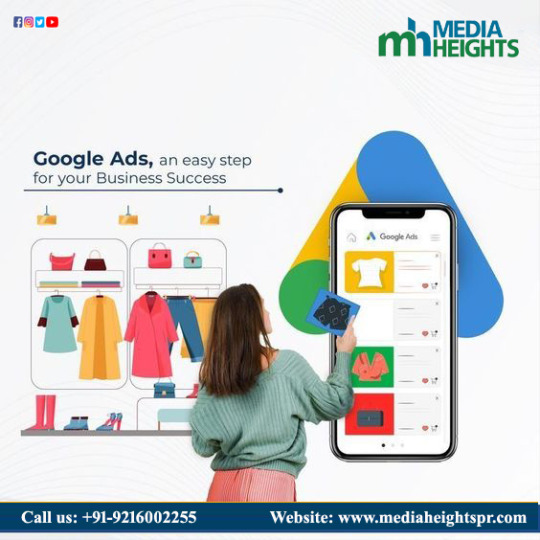
Retail, food, entertainment, and real estate are just a few industries that can benefit from having a social media presence. Brands are leveraging social media to support their lead generation and business goals, but the beauty of social media is that it encompasses several purposes.
Build your brand with digital media & take the benefits of social media branding contact Media Heights. By Mediaheightspr.com
#Retail#food#entertainment#and real estate are just a few industries that can benefit from having a social media presence. Brands are leveraging social media to suppo#but the beauty of social media is that it encompasses several purposes.#Build your brand with digital media & take the benefits of social media branding contact Media Heights. By Mediaheightspr.com#Inboundmarketing#MEDIAHEIGHTS#digitalmarketingcompany#searchengineoptimization#content#instagrammarketing#advertisingagency#web#MEDIAHEIGHTSPRCOM#best#public#relation#agency#in#chandigarh#mohali#punjab#north#india#buildingrelationships#globally#customer#internetbanding — at media heights#smo
1 note
·
View note
Text

The World Day of War Orphans is observed on January 6 every year with an aim to raise awareness about children orphaned in wars, spread information about their plight and emphasise the psychological, social, and physical obstacles that children experience as they grow up.
Brands are leveraging social media to support their lead generation and business goals, but the beauty of social media is that it encompasses several purposes.
Build your brand with digital media & take the benefits of social media branding contact Absolute Digital Marketing. by Absolutedigitalbranding.com
#Marktingstrategy #SEObrandingagency #SEO #PPC #SMO #SMM #SeoCompany #digitalmarketingcompany #socialmediamarketingcompany #absolutedigitalbranding #searchengineoptimization #advertisingagencyinmohali #facebook #twitter #marketingonline #brand #searchengineoptimization #internetmarketing #follow #digitalagency #marketingagency #motivation #digitalmarketingtips #onlinebusiness #websitedesign #marketingonline #brand #searchengineoptimization #content #ABSOLUTEDIGITALBRANDING #BEST #PUBLIC #RELATION #AGENCY #IN #CHANDIGARH #MOHALI #PUNJAB #NORTH #INDIA #onlinebranding #branding360degree #SEObrandingagency #websiteranking #websitetrafic #Digitalmarketing #OnlineAdvertising #instagrammarketing #advertisingagency #web #technology #internetmarketing #marketingonline #brand #searchengineoptimization #content #instagrammarketing #advertisingagency #web #technology #onlinebranding #buildingrelationships #globally #customer #internetbranding-at Absolute digital Branding & Public relations
#Marktingstrategy#SEObrandingagency#SEO#PPC#SMO#SMM#SeoCompany#digitalmarketingcompany#socialmediamarketingcompany#absolutedigitalbranding#searchengineoptimization#advertisingagencyinmohali#facebook#twitter#marketingonline#brand#internetmarketing#follow#digitalagency#marketingagency#motivation#digitalmarketingtips#onlinebusiness#websitedesign#content#ABSOLUTEDIGITALBRANDING#BEST#PUBLIC#RELATION#AGENCY
3 notes
·
View notes
Text
How Indian Women Are Empowered by Beauty Pageants
In India, beauty pageants have evolved into platforms that empower and encourage women rather than just being glamorous shows. In contemporary India, a beauty pageant is a celebration of skill, intelligence, and social effect that greatly influences the ambitions and self-esteem of its contestants. The following are some ways that a beauty pageant in India empowers women and advances societal development.
1. Developing Self-Belief
The development of Indian women's self-confidence is one of the most important ways pageants empower them. Contestants must demonstrate talent, composure, and public speaking abilities in addition to attractiveness when preparing for and competing in these events. Women get the capacity to effectively express themselves in front of audiences as a result of this experience, which helps them in both their personal and professional lives.
2. Establishing Chances for Professional and Personal Development
Participating in or winning a well-known beauty pageant can lead to a number of opportunities. Contestants frequently discover that they have new opportunities for careers in public speaking, acting, or modeling. Many participants go on to pursue careers in lobbying, entrepreneurship, or the media and fashion sectors after leaving the spotlight. Pageants provide women a chance to be recognized in ways that go beyond the competition.
3. Encouraging Learning and the Development of Skills
Pageant preparation include rigorous instruction in a variety of subjects, including social awareness, fitness, communication, and manners. Participants are empowered by this all-encompassing skill-building process, which gives them tools that they can utilize outside of the competition. Women are encouraged to learn about global concerns, broaden their horizons, and improve their ability to express themselves via the demanding training.
4. Promoting Social Issues
A "Beauty with a Purpose" section is incorporated into several Indian beauty pageants, enabling competitors to advocate for social concerns. Projects that tackle topics like gender equality, health, education, and environmental preservation are undertaken by participants. These women make valuable contributions to society by mobilizing support and increasing awareness through their platforms. Self-advancement is only one aspect of empowerment; another is changing the community, which is a virtue that beauty pageants highlight.
5. Dispelling Conventional Preconceptions
In India, beauty pageants are embracing diversity and eschewing traditional notions of beauty. Because it gives women of diverse origins, body shapes, and experiences a chance to shine, this shift is powerful. These occasions disrupt long-standing social standards and encourage women to be proud of their individuality by reframing what success and beauty imply.
6. Establishing a Support System
Beauty pageant contestants frequently join a network of like-minded people who support them. Long after the competition is done, this network may offer friendship, cooperation, and mentoring that empower women. These connections provide women a feeling of community and support one another, which enables them to pursue aspirational objectives in a variety of disciplines.
7. An International Representation Platform
International contests like Miss World and Miss Universe are accessed through pageants like Miss India and Femina Miss India. These forums provide women the chance to represent India internationally, exhibiting their culture, perspectives, and intelligence. For many Indian women who see themselves mirrored on a global scale, such visibility is empowering in addition to the participants.
Conclusion
In India, beauty pageants are becoming more than just competitions for physical attractiveness. These days, they are effective tools for empowering people, encouraging self-assurance, skill improvement, social activism, and career advancement.
#fashion show#fashion#ramp walk#fashion photography#beauty pageant#beautiful model#beauty shoot#beauty#beautiful
0 notes
Text
Body Modification and Self-Image
Body modification is the intentional remodelling of one's body or appearance for a variety of purposes, including aesthetic satisfaction, sexual pleasure, cultural traditions, religious convictions, body art, and more. The most frequent types of body alteration are piercings and tattoos, but it can also encompass operations such as gender reassignment surgery and cosmetic surgery (Glover-Thomas, 2020).
However, all modifications share three common points. Firstly, body modification happens only with the express agreement of the person who owns the body. Secondly, these changes certainly cause physical changes to the body. Lastly, changes are the result of human activity on the original body (Lane, 2017).

Body modification in media has been a longstanding topic. The exposure to body modification on social media has several effects on users, causing people to follow unrealistic and unattainable trends (Vaingankar, 2022). Furthermore, the growth of social media influencers and celebrities has elevated the problem to new heights by encouraging unhealthy body standards. Duffy and Meisner (2022) explore problems associated with algorithmic exposure and content creators' actions to become more visible online. Microcelebrities' content creation careers depend on a platform's visibility (Duffy & Meisner 2022), in which everyday media users utilise self-branding on social media to build fame. A strategy for gaining attention on appearance-focused social media platforms involves following aesthetic templates (Foster, 2022). Aesthetic templates include visual features that attract people's interest online, such as postures, accessories, image editing, and body modifications. These templates embody specific ideals of appearance (Foster 2022). For instance, feminine ideals revolve around accentuated femininity, celebrating features like full lips, slender noses, prominent cheekbones, and an hourglass figure (Lefebvre & Cowart, 2022).

The effort invested in presenting oneself to fit these aesthetic templates is termed aesthetic labour (Drenten et al., 2019). Conformity to these trends and standards has resulted in highly recognisable women sharing identical features, frequently acquired through cosmetic surgeries (Lefebvre & Cowart, 2022). Currently, plastic surgery is seen as an unavoidable aspect of the beauty process. There are various reasons why people might decide to have surgery. For instance, the halo effect, which holds that society perceives attractive people more favourably and is linked to virtues like intelligence, competence, and dependability, can encourage others to associate with them (Sood et al., 2017). Another reason people may want cosmetic surgery is to compare their looks to others, making them more aware of their own body image, as they feel compelled to conform to physical beauty norms (Sood et al., 2017).
instagram
Additionally, there is a connection between women's intentions to get elective cosmetic surgery and social media and celebrity (Sood et al., 2017). Celebrities like Kim Kardashian, whose bodies are frequently impossible to achieve without cosmetic surgery, remind fans of the most desirable shape of the female body (Kinnally & Van Vonderen, 2014). Furthermore, research on body image perception has indicated that women who watch more media that reinforces ideal body types are more likely to adopt an attitude towards body form and even pursue cosmetic surgery in order to meet media standards (Kinnally & Van Vonderen, 2014). This may lead to unhealthy relations between many women and their bodies, as they are inclined to modify them to conform to society's expectations.

In conclusion, exploring body modification reveals its multifaceted nature, encompassing various motives and practices ranging from cultural traditions to social media influences. While individuals have the autonomy to modify their bodies, the pervasive exposure to unrealistic beauty standards through social media and celebrity culture exacerbates the pressure to conform, leading to unhealthy body image perceptions and potentially risky cosmetic procedures. Understanding the complexities surrounding body modification is crucial for fostering a culture that promotes self-acceptance and celebrates diverse forms of beauty, free from unrealistic ideals perpetuated by media platforms.
References
Drenten, J., Gurrieri, L., & Tyler, M. (2019). Sexualized labour in digital culture: Instagram influencers, porn chic and the monetization of attention. Gender, Work & Organization, 27(1). https://doi.org/10.1111/gwao.12354
Duffy, B. E., & Meisner, C. (2022). Platform governance at the margins: Social media creators’ experiences with algorithmic (in)visibility. Media, Culture & Society, 45(2), 016344372211119. https://doi.org/10.1177/01634437221111923
Foster, J. (2022). “It’s All About the Look”: Making Sense of Appearance, Attractiveness, and Authenticity Online. Social Media + Society, 8(4), 205630512211387. https://doi.org/10.1177/20563051221138762
Glover-Thomas, N. (2020). A “Wellbeing” Paradigm: A Concept-Based Study of Body Art and Regulatory Challenges. Laws, 9(4), 22. https://doi.org/10.3390/laws9040022
Kinnally, W., & Van Vonderen, K. E. (2014). Body Image and the Role of Television. Journal of Creative Communications, 9(3), 215–233. https://doi.org/10.1177/0973258614545016
Lane, D. C. (2017). Understanding body modification: A process-based framework. Sociology Compass, 11(7), e12495. https://doi.org/10.1111/soc4.12495
Lefebvre, S., & Cowart, K. (2022). An investigation of influencer body enhancement and brand endorsement. Journal of Services Marketing, 36(1). https://doi.org/10.1108/jsm-12-2020-0509
Sood, A., Quintal, V., & Phau, I. (2017). Keeping Up with the Kardashians: Consumers’ Intention to Engage in Cosmetic Surgery. Journal of Promotion Management, 23(2), 185–206. https://doi.org/10.1080/10496491.2016.1267677
Vaingankar, J. A. (2022). Social Media–Driven Routes to Positive Mental Health Among Youth: Qualitative Enquiry and Concept Mapping Study. JMIR Pediatrics and Parenting, 5(1), 1–14. https://doi.org/10.2196/32758
0 notes
Text
The Top Creative Agency in the USA: Unveiling the Leading Branding Experts

Introduction
In the digital age, establishing a strong brand identity is crucial for businesses looking to thrive in a competitive market. Your brand is not just a logo or a tagline; it's the essence of your business, the emotions it evokes, and the trust it builds with your audience. To accomplish this, you need the expertise of a top-notch branding agency. In the United States, there is one name that stands out above the rest - INK PPT. With a proven track record of delivering creative branding solutions, INK PPT has earned its reputation as the leading branding agency in the USA.
The Essence of Branding

Before we dive into what makes INK PPT the top creative agency in the USA, let's understand the essence of branding. Branding is the art and science of crafting a unique identity for your business that resonates with your target audience. It's about conveying your values, personality, and promise through every interaction and touchpoint. A well-executed branding strategy can set you apart from competitors, build customer loyalty, and drive business growth.
Why Choose INK PPT?

INK PPT has become synonymous with excellence in branding for several reasons:
Creative Brilliance: INK PPTs team of designers, writers, and strategists are creative visionaries who excel at translating your brand's story into compelling visuals and messages. They don't just create logos and slogans; they craft experiences that leave a lasting impact.
Diverse Expertise: The USA is a melting pot of cultures, industries, and markets. INK PPT's team understands the diverse landscape and can tailor branding solutions that resonate with different audiences, whether it's a startup, a tech giant, or a local business.
Proven Track Record: INK PPT's portfolio is a testament to their success. They have worked with an array of clients across various sectors, consistently delivering outstanding results. Their satisfied clients are a testament to their ability to deliver on their promises.
Cutting-Edge Technology: Staying ahead in the digital age requires embracing technology. INK PPT leverages the latest tools and trends in design and marketing to ensure your brand remains relevant and competitive in the ever-evolving marketplace.
Strategic Approach: INK PPT doesn't just create beautiful designs; they develop branding strategies that align with your business goals. They take the time to understand your objectives and target audience, ensuring that every aspect of your brand is purposeful.
Branding Services Offered

INK PPT's comprehensive suite of branding services encompasses everything your business needs to establish and maintain a strong brand presence:
Logo Design: Your logo is your brand's visual identity. INK PPT creates logos that are not just eye-catching but also resonate with your brand's essence.
Brand Strategy: Building a brand is a strategic process. INK PPT helps you define your brand's mission, values, and positioning in the market.
Visual Identity: Consistency in branding is key. INK PPT designs visual elements like color schemes, typography, and imagery that ensure your brand is easily recognizable.
Content Creation: Words are powerful. INK PPT's team of expert writers crafts compelling content that communicates your brand's message effectively.
Web Design: Your website is often the first point of contact for potential customers. INK PPT designs user-friendly and visually appealing websites that leave a lasting impression.
Social Media Marketing: In the age of social media, a strong online presence is a must. INK PPT develops social media strategies that engage and grow your audience.
Print Collateral: From business cards to brochures, INK PPT creates print materials that align with your brand's identity.
Success Stories
Let's take a look at some of INK PPTs success stories, showcasing their expertise as the leading branding agency in the USA:
Tech Startup Transformation: A Silicon Valley startup approached INK PPT with a unique product but lacked a cohesive brand identity. INK PPT developed a brand strategy, created a stunning logo, and designed a user-friendly website. The result? The startup secured funding and expanded rapidly.
Local Business Expansion: A family-owned restaurant in New York City wanted to expand its reach. INK PPT rebranded the restaurant, created a social media campaign, and designed a new menu. Within months, the restaurant saw a significant increase in foot traffic and revenue.
E-commerce Powerhouse: A national e-commerce company was facing stiff competition. INK PPT revamped their branding, optimized their website, and launched a targeted email marketing campaign. Sales skyrocketed, and the company became a leader in its niche.
Conclusion
INK PPT is more than just a creative agency; it's a partner in your brand's journey. With a team of branding experts, a commitment to excellence, and a passion for creativity, INK PPT has rightfully earned its place as the top creative agency in the USA. Whether you're a startup looking to make your mark or an established business seeking a rebrand, INK PPT is the go-to choice for branding strategies and creative solutions.
If you need any type of branding Services in USA ,then INK PPT is the top creativity agency in the USA. To learn more about INK PPTs services and see their impressive portfolio, visit their website at INK PPT. Your brand's success story starts here.
0 notes
Text
The Art of Minimalism: Simplify Your Life

Introduction
In a world filled with constant distractions and overwhelming consumerism, many people are turning to minimalism as a way to find balance, peace, and purpose. Minimalism is not just about decluttering physical possessions; it's a mindset and a lifestyle that encourages intentional living and focusing on what truly matters. In this article, we will explore the art of minimalism, its principles, benefits, and provide practical advice on how to simplify your life and embrace a minimalist lifestyle.
Minimalism is often misconstrued as simply getting rid of physical possessions, but it encompasses much more than that. At its core, minimalism is about intentionally choosing what adds value to your life and letting go of what doesn't. It's about creating space, both physically and mentally, to focus on what truly matters and brings joy and fulfillment.
There are several key principles that guide the practice of minimalism:
Embracing minimalism can have numerous benefits:
One of the first steps in embracing minimalism is decluttering your physical space. Start by identifying items that no longer serve a purpose or bring you joy. Sort them into categories like donate, sell, or discard. Be ruthless in letting go of things you no longer need or cherish. Remember, the goal is to create a space that is clean, organized, and promotes a sense of peace and tranquility.
In today's digital age, our virtual spaces can become just as cluttered as our physical ones. Take time to declutter your digital life by organizing and deleting unnecessary files, unsubscribing from newsletters and email lists that no longer interest you, and curating your social media feeds to include only content that adds value to your life. Limit screen time and embrace digital minimalism to reclaim your time and focus.
Our wardrobes can often be a source of clutter and decision fatigue. Embrace a minimalist approach to your wardrobe by curating a capsule wardrobe, consisting of a limited number of versatile and high-quality pieces that can be mixed and matched. Donate or sell items that no longer fit or align with your style. Adopting a minimalist wardrobe can simplify your daily routine and ensure that you feel confident and comfortable in what you wear.
Minimalism encourages mindful consumption, focusing on quality over quantity. Before making a purchase, ask yourself if the item truly adds value to your life and aligns with your values. Choose products that are well-made, durable, and serve a purpose. Avoid impulse buying and instead practice delayed gratification, allowing yourself time to consider whether you truly need or want the item.
Minimalism extends beyond physical possessions and encompasses emotional clutter as well. Letting go of negative emotions, toxic relationships, and unhealthy attachments is crucial for a minimalist mindset. Practice forgiveness, gratitude, and mindfulness to cultivate emotional well-being and create space for positive experiences and relationships.
Incorporate minimalism into your everyday life by adopting simple habits and routines:
Conclusion
Embracing the art of minimalism can have a transformative effect on your life. By simplifying your physical and digital spaces, streamlining your possessions and commitments, and cultivating a mindset of intentional living, you can create more space for what truly matters. The benefits of minimalism extend beyond a decluttered home; they encompass reduced stress, increased focus, financial freedom, and enhanced well-being. So, start your minimalist journey today and discover the beauty and freedom that comes with simplifying your life. Remember, less is more, and the art of minimalism can bring you closer to a life of purpose, contentment, and joy.
0 notes
Text
The complete guide to ecommerce marketing

The complete guide to ecommerce marketing. This world of ecommerce marketing often seems like an intimidating one, with marketing types ranging anywhere from social media outreach to influencer engagement, and email marketing to regular advertising. However, marketing online doesn’t have to be a chore. Not only can you find the tools to help you along the way, but there are plenty of tips to take advantage of in order to improve your ecommerce marketing and engage customers in new ways.
It all starts with understanding the basics of ecommerce marketing. What is it exactly? What are the various types to consider? Should you dive into all forms of marketing at once or only take on one area?
These are all excellent questions. We’re here to answer all those questions and explain the ins and outs of ecommerce marketing. That way, you’ll have a firm grasp on the opportunities available to your business, giving you a clearer view of which forms of ecommerce marketing are worth pursuing.
Keep reading to get a crash course in ecommerce marketing, from the basic definition of the practice to a collection of tips to improve your marketing, regardless of the size of your operation.
What is Ecommerce Marketing?
Ecommerce marketing involves the techniques and tools implemented by a company to find new customers and guide them through the purchasing process, while also fostering old customers. Ecommerce marketing works by sending store visitors through the customer lifecycle, obtaining those customers through the top of the ecommerce sales funnel, and eventually converting them into paying customers.
In short, ecommerce marketing helps your conversion rate, turning curious ecommerce site guests into those who pay for your products.
In general, marketing done for online stores remains online. This includes social media marketing, email marketing, and a large number of other options to reach out to new and old customers. However, prudent ecommerce store owners also know that marketing is bigger than the internet.
That’s why the entirety of ecommerce marketing includes things like word-of-mouth and in-person marketing. It’s also not out of the question to consider physical marketing tactics like TV commercials and billboards.
A successful ecommerce marketing strategy relies on a company’s ability to remain flexible and work with the right tools. There’s no telling what new technologies will come out in the future, so it’s important to not get too settled into one marketing solution for the lifetime of your business.
Overall, ecommerce marketing should be considered in your costs. There’s no way to find new customers without ecommerce marketing, so every shirt or electronic sold must also have a per-unit line in your accounting figures showing you how much it cost to acquire that customer through ecommerce marketing.
As with all ecommerce topics, there’s no one answer. An online company like Dollar Shave Club found marketing success with funny television and YouTube ads. Other online stores like MVMT Watches have podcast advertisements.
Therefore, you need to figure out the absolute best course of action for your brand. Does that mean you should make a hard push with social media influencers? Is there potential for your product to be marketed at craft shows?
In this article, we’ll help you uncover the ideal marketing channels for your business. As you read on, mark down the ecommerce marketing types that seem appealing for your business. After that, you can begin testing them one-by-one to see which are the ideal solutions.
The Different Types of Ecommerce Marketing
Keep in mind that there are probably more than nine ecommerce marketing types. These are the primary forms of marketing, especially when it comes to selling products online. We also do our best to consolidate different marketing niches into over-encompassing categories, giving you a solid view into each specific category.
People often confuse advertising with marketing, and vice versa. However, marketing is actually an umbrella category, and advertising falls underneath that category.
Therefore, advertising is in fact a form of marketing, and it’s extremely important to the success of an online store.
Advertising is a unique form of marketing because it entails how you directly promote your products, and it almost always involves the company paying a fee to list those advertisements in a relevant area.
Luckily, today’s online world offers incredible targeting tools for your advertising. For instance, you can advertise on places like Google and Facebook by targeting users who have already searched for similar products. You can also target based on things like demographics, age, sex, and online location.
In general, paid advertising is available in the following areas:
Social media websites like Instagram, Facebook, and Pinterest.
Search engines such as Google and Bing and DuckDuckGo.
Other websites, whether that’s by reaching out to those websites or by utilizing an ad network.
Print documents like magazines and billboards.
Visual media such as movie theater previews or TV ads.
Tools to Help With Advertising
Google Ads – Your one-stop shop for building, targeting, and paying for ads that show up on Google and its network.
Google Merchant Center – The best way to get your products logged in the Google Shopping section of the search engine. In short, visitors can buy your products directly through Google.
Facebook Ads – A dashboard for configuring and target ads to go on both Facebook and Instagram.
Pinterest Ads – An advertisement manager where you choose an objective, insert your design and product, then launch the ad for Pinterest users to see.
Amazon Ads – Solutions to promote your products and brand on Amazon.
Bing Ads – The advertising platform to reach more customers through the Bing search engine.
Instagram – Get your brand in front of the right people with targeted Instagram advertising campaigns.
Ecommerce Marketing Type 2: Email Marketing
Email marketing remains one of the most effective methods of marketing for both physical in-person stores and those that run exclusively online.
Sending emails to customers has many advantages. First of all, people open their emails on a regular basis. Not to mention, they tend to expect things like promotions and messages from companies, as opposed to more personal messaging on places like social media or texting.
Email marketing often serves as the first order of marketing business for online stores. The reason for this is because you can start building a subscriber list whenever you want, and many ecommerce platforms offer various ways to use email marketing.
Email messaging comes in many forms in the ecommerce world:
Receipts.
Newsletters.
Abandoned cart messages.
Promotional offers.
Customer loyalty emails.
Product recommendations.
Account registration messaging.
Re-engagement or defunct customer emails.
Upsells and cross-sells.
And that’s only a taste of what can be done with your email marketing campaigns. What’s great is that ecommerce platforms like Shopify and Bigcommerce and WooCommerce already have email marketing integrations. Also, popular email marketing tools like Sendinblue and Omnisend provide built-in ecommerce automation features to guide your users through the customer lifecycle.
The importance of personalisation, or more accurately predictive personalisation
Personalisation is now a big deal for marketers and for good reason. A study shown by O2 showed that adding personalisation to their eCommerce experience increased sales by 7.8% over a short period of time and that online retailers monitoring their personalisation efforts have seen increases in sales by an average of 19% across the board.
Predictive personalisation software (where an algorithm watches all the buying habits and impressions made for each consumer individually) , using predictive analytics technologies like SwiftERM, identify consumer’s future behaviour, then rank every SKU by greatest likelihood of “that individual consumer” will purchase from all the SKUs you have listed, in order of greatest likely buying propensity. In other words, the ones they love best. CLV soars and RoR is all but eliminated. It out performs segmenting manyfold. But the art to it isn’t choosing one over the other, the seasoned marketer runs them both in tandem, to achieve maximum effect. the effect a 26x higher overall return, yes huge!
Tools to Help With Email Marketing
Omnisend – One of the more powerful ecommerce marketing tools on the market. It offers integrations with the major ecommerce platforms, beautiful templates, and automated ecommerce workflows.
Klaviyo – An option for both email and SMS marketing through several platforms. Features include segmentation, data science use, and reporting.
Mailchimp – One of the most popular email marketing platforms. It’s not made specifically for ecommerce but it provides powerful automation for that purpose.
SwiftERM – predictive personalisation software, that runs in addition to your email software identifying and capturing each consumer’s next most likely purchase.
Seguno – Email marketing with targeting and recommended products, made just for Shopify.
Ecommerce Marketing Type 3: Social Media Marketing
If email marketing is the old mainstay of retail and digital marketing, social media is the wild west. Over the years, social platforms have come and gone, while popular networks evolve on a regular basis. That makes for an exciting but tricky landscape for online store owners.
However, social media generally allows companies to reach customers in a more casual setting. It also presents rare opportunities for those customers to interact with the brands through the comment and tagging features.
The most popular social networks are Facebook, Instagram, and Twitter, yet many other options are available.
The interesting part about social media marketing is that some business types thrive on one network but have trouble with others. For instance, clothing brands usually find success on Instagram, while crafting or design stores go to Pinterest (although Instagram is also worthwhile for them).
Social marketing involves general posts that reach out to followers while also attempting a more organic discovery process for new customers. For instance, you may share a blog post on Facebook and see customers share that post with other people who don’t currently follow you on Facebook.
Social Ads
Another way to market on social media is through advertisements. From Facebook to Pinterest, and Instagram to Twitter, the major social networks all have advertising opportunities.
Although we touched on some of the main advertising networks on social media, here’s a list of the top contenders:
Facebook Ads
Instagram Ads
Pinterest Ads
LinkedIn Ads
Twitter Ads
Snapchat Ads
Organic Content on Social Media
Another way to market on social media is through the use of organic social content. Essentially, organic content is a fancy way of saying that you’re using the social network the way it was intended to be used.
In short, social posts include things like pictures, GIFs, videos, links, or even text-based thoughts.
A solid social content strategy is key to building your followership and giving your current customers a way to reach out to you in a less formal manner.
Selling on Social Media
Social commerce evolves all the time, and the way in which it’s configured depends entirely on the social network.
Some social platforms let you build a little ecommerce shop for processing your payments through their system. This is advantageous because your customers don’t have to leave their favorite social network. Yet, it’s also a disadvantage for your brand since they never come to your website.
Other platforms like Pinterest and Instagram allow for some variation of product tagging. Essentially, you’re able to post a picture of your new product and include a tag and link to the actual product page. This redirects them to your ecommerce website so the customer can purchase the product.
Social networks have a tendency to occasionally modify rules and capabilities for social selling (Facebook seems to do this all the time). So it can be frustrating for merchants, but potentially profitable if you locate the right system and configure a desirable social commerce section.
Tools to Help With Social Media Marketing
Social scheduling tools – These are great for managing your organic social content. Tools include options like Buffer and Hootsuite.
The social ad networks – The links are included above. Many other social networks have their own advertising systems as well.
Rapid social design tools – Not every online business owner is a graphic designer. Therefore, we recommend tools like Canva and Adobe Spark to find templates and quickly design beautiful social posts to fit your brand.
Ecommerce Marketing Type 4: Search Engine Optimisation
Marketing through search engines requires nothing more than a published website that’s accessible to those search engines to crawl your website.
An indexed website could find itself on the front page of Google or Bing for certain keywords, yet it all depends on how competitive that keyword is and what people are searching for.
Therefore, having an indexed site is usually the bare minimum when it comes to search engine optimisation (SEO).
Additional search engine marketing tactics include paid advertising (covered previously,) search engine shopping platforms (also covered earlier in this article,) and organic search improvement.
Organic SEO may sound like you sit back and let the internet work for you. And that’s certainly an option, but the opportunities for improved search engine rankings lie in your own hands.
Follow these steps to boost your search engine rankings, and in turn, bring in more potential customers:
Register your website domain and sitemap with the major search engines.
Sign up for webmaster tools when available. These modules, offered by search engines like Google and Bing, provide reports to check the success of your search engine tactics along with tips to improve.
Optimize your website for faster speeds and a better user experience. This usually entails optimizing larger images, making sure your website is mobile-ready, and many other areas of site cleanup.
Optimize product pages, and all website pages for that matter, with keywords that are not only relevant to your business but used for searching on a regular basis.
Create written and visual content that elevates the user experience and adds value to your brand. Blog posts, videos, and infographics provide opportunities for high-quality customer resources while also allowing you to optimize them for target keywords.
Optimize your checkout process. How easy is it for someone to drop a product into the online shopping cart and get checked out? Everything from the number of steps required to the speediness of the site comes into play.
Tools to Help With Search Engine Optimisation
Ecommerce Marketing Type 5: Content Creation and Optimisation
Content creation ties in nicely with search engine optimisation seeing as how the content you create tells search engines that you’re offering additional content to customers. Not to mention, blogging, video creation, and the many other forms of content creation supplement the products you sell online.
Customers love seeing behind-the-scenes photos of your brand, and they definitely appreciate tutorials or product guides to advance their understanding of the item they just bought.
For an online store, content falls into the following categories:
The content on your product pages.
Informational content on every other page of your website, including an FAQ and the homepage.
Your blog.
External content marketing like guest posting, video creation on YouTube, and even what’s posted on social media.
Content marketing efforts often work by indirectly promoting your products and offering relevant assistance for your products or the industry in which your items are sold.
Examples of Content to Get You Started
Infographics explaining the benefits of your product or the state of your industry.
Podcasts to talk about lifestyle choices that align with your products.
Behind-the-scenes photos or promotional imagery that can go on social media and your blog.
Blog post tutorials, how-to articles, and product roundups.
Videos that highlight products or show them in action.
Case studies to prove the effectiveness of what you’re selling.
eBooks or online magazines with long-form content that advises customers on in-depth strategies for relevant lifestyle changes or how to work with a product.
Ecommerce Marketing Type 6: Influencer Relationships
An influencer is someone who has a significant following in a specific niche. Celebrities are the more legitimate influencers but nowadays many people on social media are calling themselves influencers.
The idea behind this type of marketing is simple: Contact someone who has a large, relevant following. See if they’d like to promote your product in some natural way, maybe through a blog or social media post. Then you pay the influencer.
Keep in mind that you should do your homework since many people have thousands of followers on Instagram but they’re not active followers. You also want someone who would actually use your product in the first place. The partnership should make sense.
Tools to Help With Influencer Marketing
Influencer marketing is tough because there are plenty of non-influencers who claim they have quality followings. However, you can start your search on websites like HypeAuditor or Upfluence.
Ecommerce Marketing Type 7: Affiliate Marketing
Affiliate marketing may very well be the lifeblood of the entire content creation industry. Bloggers use it, as do many recommendation platforms online.
The idea behind affiliate marketing is rather simple. A brand creates an affiliate marketing program. Bloggers/marketers sign up and promote the brand. Every purchase through a unique affiliate link sends a “finders fee” to the blogger/marketer.
For an online store, an affiliate marketing program has far more reach and potential than any influencer setup.
It’s essentially free marketing until a purchase is actually made. You set the payout structure and provide a tool for the marketers to create their own accounts and affiliate links. Those marketers recommend your products in things like newsletters, blog posts, and social media outlets.
Tools to Help With Affiliate Marketing
GoAffPro – An excellent affiliate management app for Shopify. Other platforms like Bigcommerce and Volusion provide affiliate manager add-ons as well.
Affiliate Program for WooCommerce – A plugin for WooCommerce with role-based affiliate settings and all sorts of sharing tools.
ReferralCandy – Based more on a referral model, ReferralCandy is suitable if you’d like to give out affiliate commissions or rewards to regular customers when they recommend your company to friends and family.
Ecommerce Marketing Type 8: Shopping Experience Marketing
We call this the “shopping experience” marketing category because much of the promotional content gets presented while a user is on your website and already browsing the catalog.
The point of your on-site marketing isn’t to bombard users with repetitive popups that draw attention away from what they’re currently looking at. In fact, the entire notion of interrupting customers is a balancing act.
The key is to remain out of the way but occasionally offer more value to the customer if they want or need it.
An example of this type of marketing is a chatbox, both run by humans and bots. Many of these chat boxes answer questions about sizing and other product details. You can also recommend other products that may fit their needs.
Popups are also essential parts of on-site marketing. However, a popup should only show up once while a customer is on your site, and it must provide something of great value, like a 25% off coupon to sign up for your email list.
Other on-site, or shopping experience marketing tactics include:
Links to your customer support resources.
Guides and sizing documents.
Recommendations for other products.
Wishlist modules.
Case studies.
Testimonials.
Customer reviews.
Tools to Help With On-site Marketing
Live Chat – This is an excellent chat box to integrate with any platform and utilize bots if needed.
Cross-Sell Related Products – Although this app is for Shopify, you can find various other add-ons for different platforms.
Bigcommerce Wishlists – Check with your ecommerce platform to see if wishlists are included. You may have to find a plugin or a special theme that has the functionality.
Customer Reviews for WooCommerce – Accumulate social proof for your products with a customer reviews panel. Again, other platforms provide apps for this too.
Ecommerce Marketing Type 9: Local Outreach
Word-of-mouth marketing is one area of local outreach, but it also involves your brand getting out into the real world to partner with other brands, visit industry events, and sell your products at markets.
As for online marketing, local outreach requires site optimisation with keywords that relate to your location.
This doesn’t apply to all online stores, but it’s an easier way to tap into a market if you focus on specific locations.
The goal is to optimize for that local area and create specific landing pages for those regions.
Top Ecommerce Marketing Tips and Strategies
Now that you have the knowledge and tools to get started with ecommerce marketing, feel free to continue reading for tips on how to improve your marketing efforts and develop a solid strategy.
Use Smart Experiments
Experimenting comes into play for many aspects of ecommerce marketing. If you’re using an online tool, chances are it has some sort of testing module to see if your marketing plan is actually on the right path.
An example of this is A/B testing for email newsletters and automated worflows.
A graphic designer gets trained to know what formats and colors sell, but unfortunately, their gut feeling isn’t good enough to compete in the world of ecommerce. You’re better off forgetting about gut feelings and chnce by making several email marketing templates and testing to see which ones perform the best.
Other testing tools include keyword research apps, visual website heatmaps, and even customer surveys.
Gain Feedback From Your Customers
A quality customer survey goes a long way to get an idea of what your customers like and don’t like about your products.
Going a bit further, you can gain more objective feedback from customers by implementing areas for them to speak their minds, whether that’s through review modules, forums, or social media.
Be sure to keep a regular eye on online review sites to accumulate data and understand what’s making customers happy or disgruntled.
Utilize Targeting and Consumer Research Before Spending Money on Marketing
Similar to A/B testing, there’s no reason to spend money on advertising if you’re targeting consumers and making your designs based on instinct or preference.
Building an ad campaign on Facebook or Google can get expensive. Therefore, you should utilize their tools for seeing which types of designs actually work for businesses like your own.
In addition, take advantage of the target marketing tools so that your ads are only showing up to people who potentially want to buy from you.
Get Creative – Don’t Just Keep Sending Out Promotions
Some companies fall flat in the personality department when all they send out are coupons and promotions.
It may seem like all your customers want are discounts, but human connection can serve a greater purpose.
Take Zappos, for instance. Early on, Zappos became known for sending out handwritten thank you cards in some boxes. They also rewarded random customers with overnight shipping. Furthermore, the Zappos website was filled with behind-the-scenes content showing the outside world how quirky and relatable the employees were.
Customers appreciate that they’re buying from real people, not some faceless company. Show them that with your creativity.
Upsell Products On a Regular Basis
An upsell often seems like a salesperson attempting to get a person to buy more stuff. Luckily, the internet makes upselling more discrete.
There are so many messages that go out to customers, from receipts to thank yous to email newsletters. All of these can include recommendations and upsells. You can show upsells in your checkout area as well. The great part is that the suggestions aren’t popping up in the customer’s face and distracting them from whatever it was they were doing before.
Think About User-generated Content as a Viable Marketing Option
User-generated content is cheap and effective. Think about ways to get your customers involved on social media or other outlets. Ask for videos using your product or run a contest asking for users to suggest ideas for your next big marketing campaign.
Make it Almost Impossible to Not See Your Customer Support Resources
There’s an unsettling trend in ecommerce to hide away customer resources like they’re something to be embarrassed about.
The footer area has become the default spot to dump a list of links leading to things like forums, blogs, and knowledgebases.
That’s strange because your customer support is one of the best complimentary marketing tools you have.
Those resources don’t have to be the first thing your customers see, but it’s not a bad idea to include them in your primary menu.
Make Sure Your Entire Site Looks Good on Mobile Devices
People shop on mobile devices, that’s no secret.
Complete rigorous testing to ensure that your website theme or design looks and functions properly on tablets and smartphones.
Our Conclusion on Ecommerce Marketing
If all of this ecommerce marketing talk makes you feel overwhelmed, don’t fret.
Start with one suggestion or marketing practice and see how well your company can excel at it.
The best method is to set smaller, attainable, concrete goals so success is more likely. That way, your marketing efforts gain momentum and you’ll have an easier time transitioning to a new marketing tactic.
If you have any questions about ecommerce marketing in general, let us know in the comments!
We hope you enjoyed this article, intended to help improve our client’s profitability. It reflects the care SwiftERM offer. If you haven’t already done so, then please enjoy a FREE month’s trial of our predictive personalisation software on your site, and let us know what you think.
Here
Other articles of interest below: (Index to all articles here)
1 note
·
View note
Text
In Depth Analysis of ‘Skam’: Belonging with Realism

There seems to be universal acceptance that the mere suggestion that a television drama is marketed towards a teenage audience, or is beloved by teens, reduces the creditability and artistic merit of the television show. In popular culture, media aimed to teens – and especially female teens – has been seen a childish, low brow content filled with bad acting, bad writing that contains illogical plots and superficial – as it contains beautiful twenty-somethings playing sixteen years old teens. This opinion could be due to that fact that scholarly critics are not the ‘intended audience’, but it is argued the reason may be that teen dramas, with their ‘ludicrous’ plots, separate themselves from ‘reality’ for entertainment purposes, which thereby alienates the ‘rational’ mind-frame of the critic. By detaching itself from realism, teen dramas, as a genre, seem to be seen as superficially candy floss – bright ostentatious sugar-inducing fluff with no core-essence nor nutritionally substantial properties. It is argued that teen dramas have the ability to be more than superficially candy floss. The following essay will analyse the Norwegian teen drama Skam and how it strives to represent teenagers in a genuine and realistic way by its use of extensive research, authentic acting and location, and digital storytelling. Through it’s creating, making, and releasing of the series, Skam invites critical television evaluation while also exploring the crucial element of emotional growth and belonging that are needed for an ideal teen drama.
Teen Dramas – in common discourse
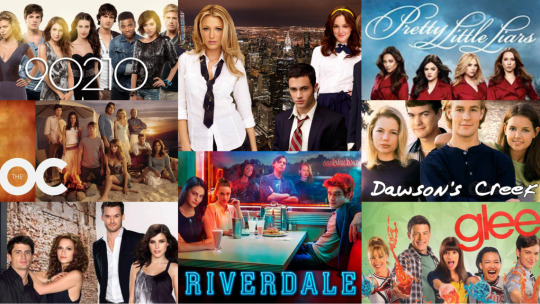
Though, in the past, it may be prevalent that there was a separation between film criticism and television criticism – film being seen as more worthy of art criticism – there is distinct quality hierarchy of televisional texts. With acclaimed serialised dramas focusing on a male protagonist/anti-hero, mainly broadcasted on subscriber based service, being deemed worthy of evaluations, soap operas, reality tv, and teen dramas on network television are seen as below par. Television dramas that are focused on teenagers are seen as cringe-worthy or a part of pop-culture that should be mocked and not taken seriously. Kevin Williams who was, during the 90s, applauded for his work on the horror film Scream – having teens conversing in the metalanguage of film – was also reprimanded for creating the hit television show Dawson Creek – having teens conversing in the metalanguage of film. Dawson Creek was seen as a teen soap opera that was filled with sex, drama, and love-triangles, that didn’t merit the opinion of highbrow critics. Similarly, shows such as Gossip Girl, The OC, One Tree Hill, Vampire Diaries, and Riverdale have been – and will continue to – criticised for its writing, directing, and acting. There may be expectation to this prejudice of teen dramas. Buffy – The Vampire Slayer has been praised for its writing and Friday Night Lights was seen as a critic darling. However, it should be noted that Friday Night Lights was overlooked by audiences for its marketing as a ‘teen drama’ and critics have negatively commented on the show when discussing its teen or melodramatic elements. A teen drama should, it is argued, provide an insight to teenage life that is putting a mirror to the teen audience’s life and also reinvigorating the memories of teen life for adult audience. Late teens and early twenties are the years where we are confused, as humans, on where we belong, who we are, and what we want. Therefore, teen dramas, in essence, should provide a realistic representation of teenage years.

Traditional Teen dramas and their rejection of Realism
Though many of the aforementioned teen dramas deal with the melodramatic plots that are all wrapped up in teen angst and served to its audience on a weekly basis – they all encompass a crucial part of any teen drama. The essence of a teen drama, it is argued, is the raw, real, unapologetic emotions. As teens, when we experience love – usually our first experiences – it is all consuming, while as adults; we tend to be more rational and mature. Our hates are world ending – while as adults we either ignore it or deal with it with the right amount of passive aggressiveness. Therefore, when a drama reproduces these realistic and accurate representation of emotions and stories, it excels as an artform. Even if a teen narrative is dealing with murder mysteries or vampires, it excels when it looks at the raw emotions of their characters and the characters’ longing to belong. Teen dramas are a great platform to a realistic representation of growth and exploration of a character’s identity and themes of belonging. This is excellently portrayed in Friday Night Lights with the football players coming to terms with their place in Dillion when they are no longer football players.
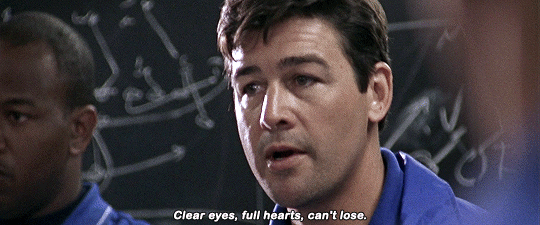
Cinematic realism, as infamous critic Bazin states, is the fulfillment of the human craving for realistic representation. Realism, in film theory, is obtain through reflection of reality being reproduces through camera lens. Realism critics who supported realism in film submitted several characteristics that produced cinematic realism, these being use of long takes, deep focus, limited editing, and use of actual locations non-professional. These characteristics are in contrast with what is associated with teen dramas. The cast is often filled with actors who are in their later twenties rather than their late teens, the text is highly stylised, and ludicrous plots are aimed to provide wish-fulfilment and escapism rather than realism. However, Skam rejects these characteristics of the teen drama and instead, not only accepts the theory of realism, innovates what television can do in the 21 century to thoroughly satisfy the human craving for realistic representation. Skam uses traditional realism through extensive research, the use of actual locations, and the use of nonprofessional actors, but innovates by using temporal realism and transmedia storytelling.
Creating Skam

NRK (Norsk rikskringkasting) is the Norwegian Broadcasting Corporation, similar to British’s BBC and Australia’s ABC. Which means that it is a publicly funded corporation (through tax-payers) and is therefore not a commercial broadcasting corporation, such as the American Broadcasting Corporation (ABC) – which is funded through commercials and advertising, nor a private broadcasting corporation, such as the HBO or Netflix - that are funded through monthly/annual subscriptions. NRK, is therefore, serving citizens, not merely consumers as their audience, thereby having a public duty to uphold. So, when NRK recruited Julie Andem to create a teen drama – it was in order to perform a public service by creating a text that was relevant to the new generation of Norwegian girls. This show not only wanted to represent the Norwegian youth and their issues, but also provides a platform for teens to gain guidance and empathy – a more subtle and nuance PSA.
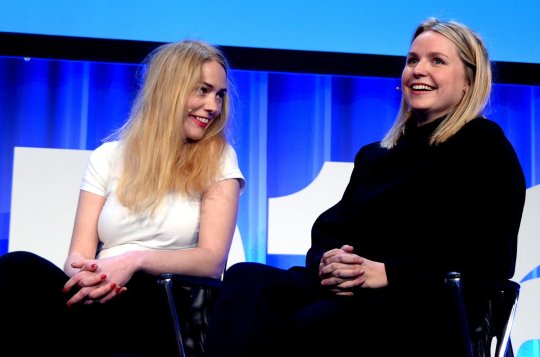
NRK and Andem’s the new drama concept was set to target the specific needs of 16-year-old Norwegian girls—‘the two years before you turn eighteen, a new time at high school and the pre-adult, sexual age’. Where teen dramas are usually written by 30+ year old writers and produced by 40+ year old executives of networks trying to sound like ‘the teens’ and bring issues that they think teens go through. This can be seen in shows where teens are delivering lines with cringy ‘slang’ or outdated references, and their usage of social media is depicted as obsessive or narcissistic through the lens of a parent rather than an exploration of emotion and identity by the youth. Andem was able to see this distance that she may have with ‘today’s youth’ and believed she couldn’t tell their story, because it was there’s – therefore she needed to hear it from them. This led to an extensive audience research, where Andem and her team orchestrated 50 in-depth interviews with Norwegian teens from all over the country, 200 speed interviews, school visits, social media scanning, and readings of reports and statistic on teen culture. In her interviews Andem talks about the large impact these interviews and research had on her creative process.

Through this extensive audience research a common factor was discovered amongst teens and that was pressure. It was discovered that Norwegian teens experienced a lot of pressure and this became the driving force for the creation of the drama. The team wanted to address and explore this aspect of teen life and even formulated a ‘mission statement’ which defined SKAM’s vision: to ‘help 16-year-old girls to strengthen their self-esteem by breaking taboos, make them aware of interpersonal mechanisms and demonstrate the rewards of confronting fear’ (Furevold-Boland, 2016). So, NRK is interested to provide a public service to the Norwegian youth by clearly representing them and their issues in a realistic and authentic way. They aim to do this through Andem’s creative judgments and extensive research. The team has not gained an understanding of Norwegian teens and the usage and importance of social media, but had also generated a specific target audience and a thesis statement that will run throughout the series. However, this is not the end of their innovated production towards realism.
Making Skam

The great appeal of Skam, along with many others, is how realistic and genuine the stories and characters feel. This can be attributed to the aforementioned research that the team had conducted which allowed for clear and real depiction of the hardships and struggles that today’s teen face. Another attribution the contributed to the authentic and realistic feel and tone of the show, it is argued, is the inclusion of actual location and age-appropriate non-professional actors. As mentioned earlier, teen shows usually have twenty somethings playing teens. This is usually due to child labour laws in the United States and other countries. This may seem like tiny complaint; ‘This is so unrealistic, that 16-year-old is clearly 21. I can’t believe anything after this’. However, this casting choice not only has an impact on the story, but also on how it affects teens watching the series.
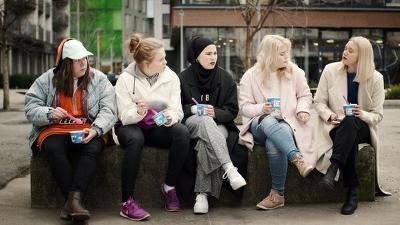
Clinical psychologist, Barbara Greenberg, stated that by casting actors in their 20s in teen dramas have the message to actual teen audiences that this is what a teen is supposed to look like. A person in their 20s is more likely to have a consistent appearance, whereas an adolescent may change more frequently. “Some days they’re thinner, they’re a little heavier, they have pimples, their hair is a little frizzy. It’s all ok,” Greenberg says. So, theses teen actors in a studio high-school don’t share these symptoms of a teen body, it therefore then makes the teen viewer vulnerable to feeling self-conscious and depressed about their appearance. “That leads to all kinds of body-image and social-comparison issues,” Greenberg says. So already we have a disconnect between the actor, the teen character, and the teen audience. This casting choice also has effect on the way stories/plots are presented and viewed. When you have storyline where a child is in sexual relation with an adult and both parties are played by consenting age adults, the story is not as creepy or unsettling as it should be presented, but rather it is seen as ‘forbidden love’ and sexy. For example, in Pretty Little Liar where a 15/16-year-old teen girl is having a relationship with her male teacher, in reality the actors as 21 and 24 respectively. The casting choice not only eliminates the reality of the age difference, through mere contrast that would occur between a teen girl and a male adult, but also normalises that age difference.

So, how does Skam not only differ and but excel? Most of the actors, when shooting the first season were in their teens. A plot point in the first season is that the girls are encourage to hook up 97er boys – as in boys in their high school that were born in 1997. When the female lead states that she has a boyfriend, she is encouraged to dump him because he is a 99er (born in 1999). What is compelling is the actors are of that age – her boyfriend is born in 1999 and the boys that are 97ers are actually born in 1997. This may bot seem crucial, however, watching the series set in a highschool with people that are teens and born in the same year as the teen watching, does have a psychology and subconscious effect that resonates with the audience.
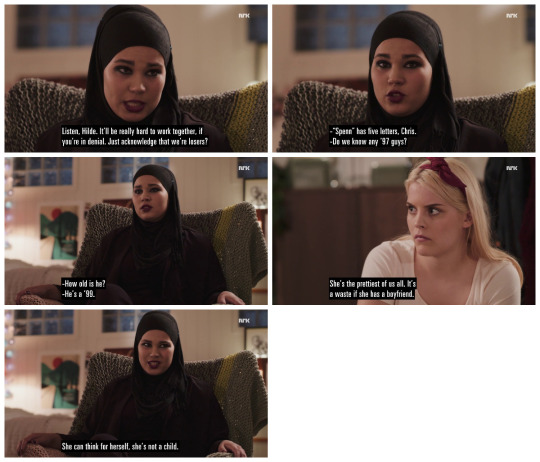
As mentioned before the show was aimed at specific demographic, therefore it is important to show version of teens that they have seen (classmates, friends, etc.) or are versions of themselves. In teen shows, one often sees the glamourous queen bee in a one-of-a-kind coutour outfit strutting through the halls of her elite high school with her encourage, in coordinating outfits, behind her. However, the audience member watching this exhibit is viewing this on the laptop in their casual tee and sweats on their bed while eating dinner. There is a contrast between the teen on the screen and the teen viewing a representation of themselves – one cannot see themselves as the ‘queen bee’ figure nor can one see this hero figure as a person in the real world. Neorealist filmmakers despised the ‘hero’ figure as they excluded millions and allowed an inferiority complex to resonate with the audience. Realists desired to create inclusion, rather than exclusion, by depicting the ‘everyday’ man, them and others, as the protagonist of life - “to strengthen everyone, and to give everyone the proper awareness of a human being”. This is similar to the thesis the Skam team set up to prove – ‘help 16-year-old girls to strengthen their self-esteem by breaking taboos, make them aware of interpersonal mechanisms and demonstrate the rewards of confronting fear’. Both forms, therefore, asked their actors not to be skilled at acting, but to understand themselves as human beings - asking them not to ‘act’ like an actor, but to react as themselves. A desire to capture the gestures and motions that belonged to this particular person, not one of the many false exaggerations that could be conjured by an actor. This style is evident in Skam as Andem would encourage her actors to play around in the scene and put pieces of them into the character.
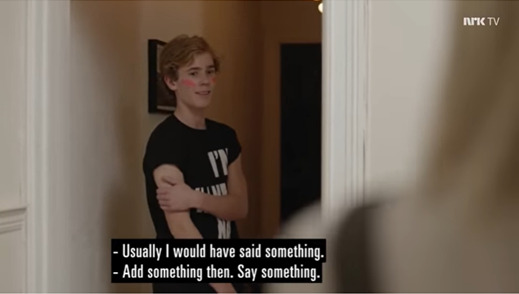
In this behind the scenes clip, the actor Tarjei Sandvik Moe is supposed to walk out and see a returning character who the cast has not seen for months. He is supposed be shocked and surprised, but it doesn’t feel authentic. Tarji states that he, as Tarji, would have said something, and Andem is heard behind the camera encourages him to say something then. In the final cut, Isak, Tarjei’s character, says the name of the returning character. This shows the Skam team’s desire to be authentic, realistic, and genuine in their depiction of teen reality. These naturalistic and geniue traits not only make audience see these non-professionals as people behaving like people, rather than glamorised actors acting like fictional characters, but allows for the opportunity for audience to also see themselves in the characters’ flaws and desires. Part of the show’s authenticity comes from its actors: They’re roughly the same age as their characters, have minimal performing experience, and wear little or no makeup to cover their youthful blemishes. We see them with breakouts of acne, similar to millions of teens that grow through this customary process as teenagers. The actors naturalistic look (through minimal makeup) and acting style that one can believe they could encountered a, or many, Isak(s) (or other characters) somewhere in their world.
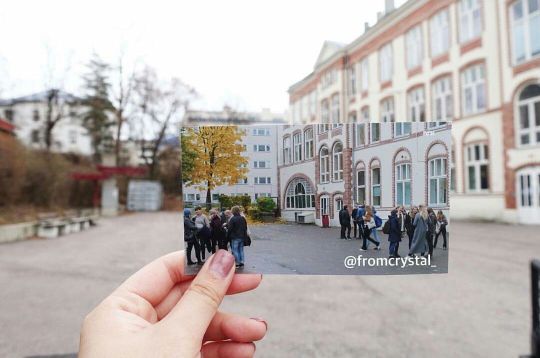
Skam is filmed at Hartvig Nissen School. This is not only an actual running established school, but also a school which some of the cast have attended as students. The school is not only used as an exterior, for establishing shots and then filmed in a studio, but also interior – using classrooms, hallways, etc. Character’s apartments and homes are actual locations, rather than stages in studios. Again, this allows for the series and characters to feel real - these are homes, not sets. Therefore, it has been demonstrated how the Skam team’s mission, to obtain and represent the reality of teens, has been executed through the use of research methods and elements of film realism; however, Skam is innovative in their methods and goes beyond what had been used previous in 20th century media/mediums. Skam engages its audience through the medium that they (the audience) is accustom, whist also transforming their (Skam team’s) television media through transmedia storytelling.
Releasing Skam
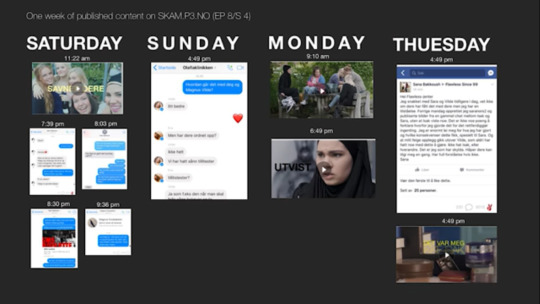
Obviously, there is an issue many television broadcasting corporations are facing today, which is the abandonment of traditional television viewing. Audiences are now watching on demand and not ‘live-watching’ or schedule watching their television programs. Audiences, as corporations like NRK understand, like not only to be in control of when they view media but how. At the time, NRK was noticing the shift in their audience viewing habits. Therefore, there is no point for the Skam team to conform to traditional television viewing standards to a target demographic that is constantly using on-demand viewing to consume their content. The shift towards on-demand viewing is not new to television networks. Many services are providing on-demand viewing experience through binge-watching episodes. The notion for network to provide episodes online is not innovative, in fact it conforming to the norm. However, Skam chooses not to conform norm or previous conventional methods of television viewing, but instead uses new media and mediums to reach their goal for authenticity and realism. The aim of the research was both to gain in-depth information on Norwegian teens, in order to portray them in a relevant and realistic way, but also to identify and discover how the new online drama concept could serve the needs of this particular audience segment. As previously mentioned, there are several standards that directors and creators used to project reality – whether that be through long takes, deep focus, limited editing, and use of actual locations non-professional. The Skam team stated that, ‘we want to provide popular enlightenment but in a context the audience segment understood and liked’. Skam includes other elements in order to create realism an audience connection to the characters through the use of transmedia narrative and real-time release.
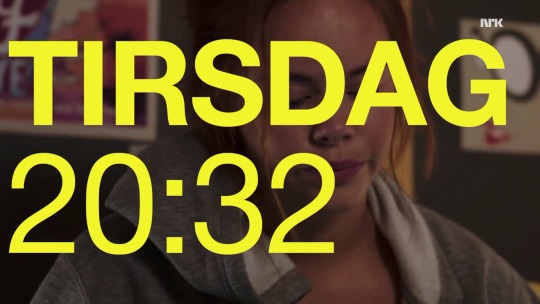
Skam released the scenes to their episodes in real time. For example, if the characters are having a conversation at school, during lunch time, the scene would be dropped at 12:15pm on Monday – with a title card stating the day and time. And if during that conversation they discuss meeting later that day at 9pm, the scene would end and at maybe 9:30pm – again scene is introduced with title card stating time and day – the characters will meet and a character could apologise for being late. This mini-clips and scene would be released throughout the week, without informing the audience when they would be released, with a compilation of the scenes being released to a traditional episode on Sunday. Why is this method not only innovate, but also essential for Skam and its thesis statement? As mentioned previously about the teen who is in their bed wearing a causal tee and sweats on their bed with their laptop and viewing a glamourous queen bee in a one-of-a-kind coutour outfit strutting through the halls of her elite high school – the teen audience is so distant from the image on the screen to their reality.
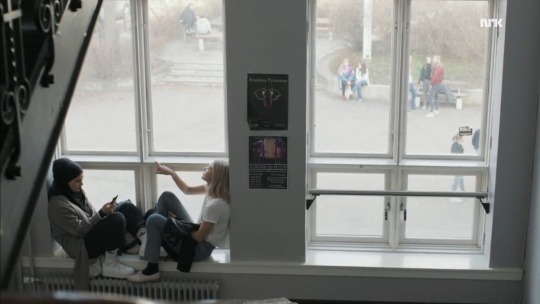
Skam, however, closes this distant, not only through non-professional actors and location, but also through real time. The teen audience viewing the clip posted, before going to they go to bed, is watching the character doing the same thing the audience is doing this time of the week. If it is a weekday, the character is in their sweats watching videos while eating their dinner – something the audience is most likely doing. If it is a public holiday, characters are spending time with friends and family – much like the audience is. This creates a sense of temporal realism, reality given to the audience by a shared temporal (time) space. These characters are living and experience life in the same temporal space as the audience. Clips that are released on New Year’s Eve is obviously a great way for the show to demonstrate this – bring in the new year with characters and audience members in a shared temporal space. The show uses real time release in so many ways. For cliffhangers, a character is distress in the last clip and then a clip doesn’t appear for hours/days – what is going on? If a big even was to happen, audiences would wait for the day, and time, like the characters would – both characters are experiencing same anxiety and excitement of the events transpiring. Audiences are waiting for a clip – that they may not know when will come and how long it would be – throughout the week. However, while waiting, they may also look through social media to find solace.
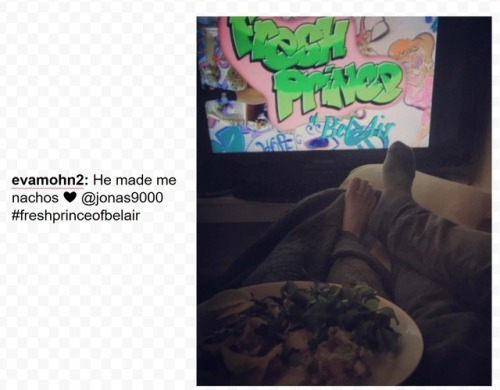
The Skam team also created social media accounts for their characters, not actors, but the characters. The ‘characters’ would post pictures and messages – as any teen would today. Not only that, but the audience was also privy to the private messages exchanged between characters. This allows audiences into the lives of the characters and makes these fictional characters feel more real and like a friend to the audience. By using both these private messages and social posts, Skam was able to tell a transmedia narrative. A transmedia narrative (also known as transmedia storytelling or multiplatform storytelling) is telling a single narrative or story experience across multiple platforms and formats using current digital technologies. The most common example is MCU – where they told a story through not only several film, but also television series. The texts have used transmedia storytelling, such as Doctor Who (the tv series, spin offs, books, big finish, movie, etc), The Lizze Bennett Diaries (social media for characters, web series, spin offs, etc), and more. The audience isn’t required to explore beyond the main text (the tv show or movie) to subsidiary texts (web series, books, social media), however those who do interact with the transmedia narrative, and fan culture, are able to gain a deeper understanding of the show/characters and are given Easter eggs.
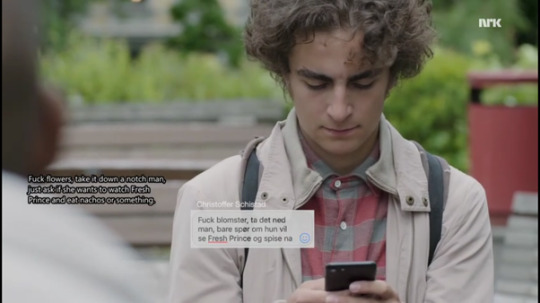
For example, in Season 1 a character on Skam, Eva, posted on Instagram a photo stating that her boyfriend, Jonas, made her nachos and shows the Fresh Prince of Bel Air title card. This seem arbitrary and irrelevant to the main plot of Season 1, however in Season 4 in the final episode when Eva’s new suitor texts her ex Jonas for advice, Jonas tells him just ask her to watch Fresh Prince and eat nachos. There was no need for a ‘call back’ to a social media post from Season 1, but by doing this Skam was able to utilise not only digitial storytelling, but also transmedia storytelling.
Realism and Belonging
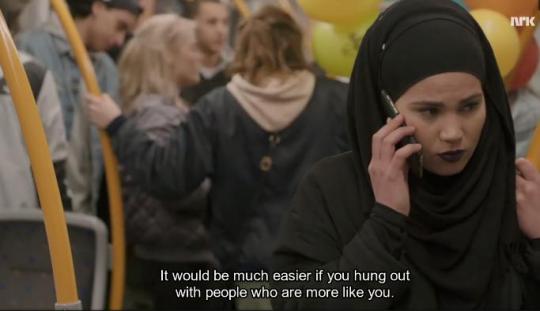
So, while other teen dramas try to depict a grand and fantastical allusion of teen life, Skam rejects that and offers a realistic depiction through its creating, making and releasing process – but how does the series represent, through realism, belonging. Each season of the series focus on a central character. There is a core set of characters at the school, but each season focuses on one character – we see the narrative through their eyes – and their journey. Season topics include identity and loneliness, feminism and sexual assault, sexuality and mental health, and religious beliefs and online bullying. These were inspired by the interviews conducted in the research and relevant to teens whilst growing up in today’s society. The main character is faced with these real issues – they struggle alone with the burden of these topics and are able to finally resolve them with the help of friends and professionals. Skam is excellent in depicting the importance of a strong group of people who will listen to your issues, accept you, and guide you to find the answers. The show does not aim to solve a murder mystery or decide which boy the girl should go to prom with – it aims to show how others are also struggling with the issues you have, how others can and will accept you, and how you can also find the answers. The show’s thesis and mission statement is to ‘help 16-year-old girls to strengthen their self-esteem by breaking taboos, make them aware of interpersonal mechanisms and demonstrate the rewards of confronting fear’ The show tackles real issues (through creating) by creating real characters (through making) and allowing audience to engage with them on an intimate and personal level (through releasing).
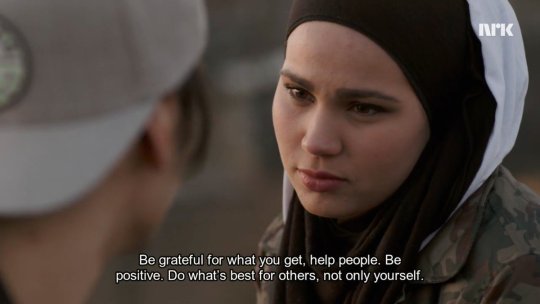
In conclusion, through its creating (thesis statement and research), making (non-professional actors and location), and releasing (live release and transmedia narrative), the series Skam is an example of an ideal teen drama that depicts emotional growth and belonging for its audience. Rejecting the fantastical and embracing realism, through the use of extensive research, authentic acting and location, and digital and transmedia storytelling, Skam is able to depict teenagers in a genuine and realistic manner. Skam is a television series that should be analysed and evaluated in a critical context, and not be seen as a mere ‘teen-drama’. The series provides ample opportunities to be praised for its innovation, creativity, and uniqueness. Other teen dramas should not submit to the underachieving standards of what it is to be a teen drama, but instead realise what the true purpose of a teen drama is and rise to the occasion to creating something new, powerful, and meaningful.
12 notes
·
View notes
Photo

Retail, food, entertainment and real estate are just a few industries that can benefit from having a social media presence. Brands are leveraging social media to support their lead generation and business goals, but the beauty of social media is that it encompasses several purposes. Build your brand with digital media & take the benefits of social media branding contact Media Heights. By Mediaheightspr.com#Inboundmarketing
#MEDIAHEIGHTSPRCOM best public relation agency in chandigarh mohali punjab north india buildingrelationships globally customer internetbandin#MEDIAHEIGHTS digitalmarketingcompany searchengineoptimization content instagrammarketing advertisingagency web MEDIAHEIGHTSPRCOM best public
2 notes
·
View notes
Text

Digital marketing is any marketing strategy that uses electronic devices or digital tools to promote a product or service and measure the effectiveness of the strategy. Marketing campaigns are usually launched using a computer, cell phone, tablet or another device.
Brands are leveraging social media to support their lead generation and business goals, but the beauty of social media is that it encompasses several purposes.
Build your brand with digital media & take the benefits of social media branding contact Absolute Digital Marketing. by Absolutedigitalbranding.com
#Marktingstrategy #SEObrandingagency #SEO #PPC #SMO #SMM #SeoCompany #digitalmarketingcompany #socialmediamarketingcompany #absolutedigitalbranding #searchengineoptimization #advertisingagencyinmohali #facebook #twitter #marketingonline #brand #searchengineoptimization #internetmarketing #follow #digitalagency #marketingagency #motivation #digitalmarketingtips #onlinebusiness #websitedesign #marketingonline #brand #searchengineoptimization #content #ABSOLUTEDIGITALBRANDING #BEST #PUBLIC #RELATION #AGENCY #IN #CHANDIGARH #MOHALI #PUNJAB #NORTH #INDIA #onlinebranding #branding360degree #SEObrandingagency #websiteranking #websitetrafic #Digitalmarketing #OnlineAdvertising #instagrammarketing #advertisingagency #web #technology #internetmarketing #marketingonline #brand #searchengineoptimization #content #instagrammarketing #advertisingagency #web #technology #onlinebranding #buildingrelationships #globally #customer #internetbranding-at Absolute digital Branding & Public relations
#Marktingstrategy#SEObrandingagency#SEO#PPC#SMO#SMM#SeoCompany#digitalmarketingcompany#socialmediamarketingcompany#absolutedigitalbranding#searchengineoptimization#advertisingagencyinmohali#facebook#twitter#marketingonline#brand#internetmarketing#follow#digitalagency#marketingagency#motivation#digitalmarketingtips#onlinebusiness#websitedesign#content#ABSOLUTEDIGITALBRANDING#BEST#PUBLIC#RELATION#AGENCY
3 notes
·
View notes
Text
Branding Lecture
On Friday we were given a previous lecture again to make sure we really understood the objectives of the project. This helped as i felt our group may have been getting too many ideas with the need to use them all within the brand. We began to research certain competitors and trends that we felt relates to our ideas and could maybe take inspiration from. We were given a task within our group to look at one of the chosen brands and analyse each factor within the brand that makes it successful. This information can help us when choosing exactly how we want our brand to be perceived. While some member of the group were researching other competitors similar to our brand, Talia and I completed this task to present to the class.
Blog Task: The group and I have decided to look at the brand Savage x Fenty from the options we were given. We felt as though this brand is related to our vision of our own brand as they also sell loungewear as well as lingerie. I am going to cover three of the eight elements needing in a brand below meanwhile Talia covers the others.
Victoria's Secret should learn from Rihanna's Savage X Fenty show (insider.com) Accessed 5th February 2021
Brand Identity:
Just like any other brand, Savage Fenty has its own identify that helps them be perceived by a customer. When looking into the atheistic of their brand regarding what sort of colours and logos they have created it was all fairly basic. Their logo is not too complicated having black and white text which is blurred slightly. They use the X symbol placed in between the two words as a shortcut of identification as the name is quite long. It is easier to be identified by the letter and brands often keep logos short and sweet, so the customer is able to remember it. There does not seem to be any key colours within this identity as each time I’ve come across the brand the layouts have been in different colours. The main key shaped would most definitely be the blurred text and the fact the creator is Rihanna. I think this brand definitely users her high platform as an advantage when it comes to this factor. Many people would have heard of the brand from the creator which gives them an advantage as I think her platform prior the brand would help the success of the brand.


Their colours are fairly simple with shades of black and white with hints of pinks, red and purples. I perceived this as mysterious and sultry which ties into their brand nicely being a underwear business. It would be beneficial to keep this identity fair simple as they are able to explore their brand more than you would if you stuck to a particular colour palette. Savage Fenty do a range of products in a selection of colours which validifies their importance of diversity. Their main vison and purpose I believe is to show more equality within the fashion branding world and creating products suitable for everyone. Previously Savage Fenty have ran a runway show with a range of different models. This being size, gender identification, looks, disabilities etc which is unfortunately quite rare in the modeling world. It is more common to do this and I think this has been a key piece of the brands visual identification and engaging a wider target audience. I hope our brand could do this also as we are looking into having a range of different models also.


Promotion: Savage Fenty are good for reaching their audience. I think this is directed towards a younger audience and I do not see many advertisements oof this brand other than online. This is things such as YouTube ads, social media ads etc. I think majority of their promotion techniques comes from Rihanna’s platform and the links she has with other famous faces. There is a lot of famous models and singers who are ambassadors of the brand with millions of follows which increases the engagement of the brand. These people have a lot of tech within their job and is very online based. I see these ambassadors using their social media platforms to promote the brand by tagging them or ever recording a YouTube video based of the brand. This is a new but very successful way to promote and is the best way to reach an audience especially it being a online shop. There ambassadors have been people like Bella Hadid, Cara dellivene , the singer Normani and Kelahni , Cindy Kimberly etc.


Price: this brand is well known for offering discounts and other pricing strategies that would be cheaper for the customer. Things such as promotional codes, discount codes based on particular events or times of the year is useful to the brand. For example, new year discounts of valentine’s sales. They also have created a membership plan which enables a customer to register and receive special offers and price reductions on items. This VIP membership enables Savage Fenty to have frequent customers as the customer has to pay for this monthly offers of the items. This is a good technique for the brand however when looking on the site as the customer it can be confusing if you wanted to shop for their products less frequently.

Eg these discount offers which show up on the site straight away are only available for VIP customers which could be considered as misleading. You can’t see the regular pricing of the lingerie if you wanted a one-time purchase until you click onto the product.

Talisha’s Research:
CUSTOMER- Rihanna’s brand Savage X Fenty caters to diverse sizes and skin tones left out by the fashion and beauty industry.
size inclusivity- The brand proves that “one-size-fits-all” is a myth. The average US size sits between 16 and 18 and two-thirds of US women categorize themselves as a ‘special size’ (plus, petite, tall, etc.).With sizes ranging from XS to 3XL, seven shades of ‘nude’ and models from all shapes and sizes on the catwalk, Savage x Fenty positions itself as an empowering alternative to Victoria’s Secret, which has been struggling to resonate with consumers. Instead of proposing women to aspire to look like a supermodel, Savage x Fenty encourages them to look like the best version of themselves.
At the essence of all Rihanna’s businesses is the notion of inclusion and her lingerie encompasses this with extended sizing so women of all shapes can shop the same or similar product on one site. Rihanna adds a personalized touch to her brand marketing to ensure her fans are engaged. She appears among the cast of diverse models in her campaigns, communicates to followers about new products via Instagram stories. Following the rapid growth of subscription services in retail, Savage X Fenty also promotes a VIP program, giving members access to free shipping, special discounts and packages of exclusive styles curated by the singer.
The brand offers a membership program called “Xtra VIP” granting members exclusive deals and offers, early access to product releases and limited-edition boxes curated by Rihanna herself. “It helps to further connect with customers and create a community”, she explains.
https://fashionunited.uk/news/business/savage-x-fenty-one-year-later-what-s-rihanna-s-impact-on-the-lingerie-market/2019050643017
https://edited.com/resources/how-rihanna-is-slaying-the-lingerie-game/
PRODUCT-The brand initially consisted of 90 pieces that sold out online within a month. Now, it has expanded to over 800 styles currently retailing on the US site.
Since Savage X Fenty burst into the scene, there has been a 34% increase in the number of size-inclusive lingerie styles across the UK & US combined. Retailers are finally understanding that there needs to be a greater representation of sizes across products and in advertising. Savage X Fenty lingerie offers many flesh-coloured hues providing options for women of all skin tones. Nudes and skin colours currently make up 19% of the Savage X Fenty range retailing on the US site, including some recent additions. A new Instagram-promoted campaign, New Neutrals, has been launched adding the tones ‘honey’ and ‘brown sugar’ to several products.
PRICE- The majority of the range sits between the $20-40 price bracket with 32% priced under $20.
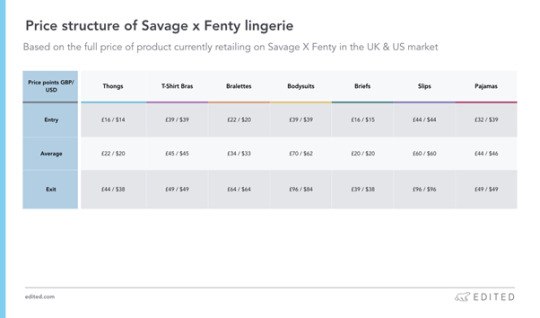
https://edited.com/resources/how-rihanna-is-slaying-the-lingerie-game/
PACKAGING-

https://www.elle.com/fashion/shopping/a26110076/savage-x-fenty-xtra-vip-subscription-box-launch/
PLACE- The company has also partnered up with online wholesalers Asos and Zalando. Online- own website, Asos, amazon, and Zalando Savage x Fenty hosted a number of pop-up stores last year. Rihanna to open Savage X Fenty pop-up in London
Once completing this task and the afternoon was near to the end, we gathered in our groups to look at particular trends on WGSN which we think we could base our product range off. We also discussed what we could do over the weekend that could help us validify our brand. I looked at a particular trend, and sushi looked at a euphoric , wanted to combine the both which is why I created a mood board . This helped me visualise what our brand could look like rather than taking notes all the time. Being a branding student I wanted to create this with the existing skills I learnt in the previous lecture. After researching savage Fenty we found their logo being most inspiring. I use of having two designs which convey the brand, that being the name and the letter X alone, helps gain attention quicker. It is important that if we were to have a longer name that we also have some sort of design which could be shortened and still be acknowledged as our business. For example; Savage Fenty having the distinctive X or McDonalds having the letter M as a way of advertising their brand.
0 notes
Text
In Conversation With Conceptual Artist Pedro Reyes
Contemporary conceptual artist and traditional stonemason; architect and activist; engineer and craftsman. The cross-disciplinary nature of Pedro Reyes' work - which encompasses performance, installation, video, sculpture, and activism - makes a strong case for multiplicity.
Acknowledging the poetry of form as well as the power of politics, Reyes' work layers complexity, humor, rigor, and design. Reyes lives and works in Mexico City in a brutalist house of his own design.
Rosie Robertson (RR) Pedro Reyes (PR)
RR: Having first trained as an architect, you now create time-based, conceptual performance art, and sculptural works; was it a childhood dream to become an architect?
PR: As a child, my grandfather was a significant influence because he taught me algebra and mythology at the same time, he would take a Greek or roman myth, and then he would pose a problem in algebraic terms. For instance, a simple arithmetic problem would be: Jason has to kill the hydra, but can only catch two heads at a time; how hard does Jason have to work? What that taught me was that you could have myths translated into a formula, and those myths could change or be rewritten using the same elements that gave me the keys to eventually perform. On the other hand, my father was also a significant influence because he taught me engineering drawing. He did not mean to impress me, but to give instructions for someone to build something. The acknowledgment that "if you can draw it, you can make it" gave me the necessary skills to become a sculptor.
RR: Coming from an architectural background, does your artistic practice share a similar relationship with the notions of time, space, politics, and the body?
PR: In architecture, you have to respond to a program, you have to solve a problem, which has stayed with me in my art practice. I expect from my pieces some degree of accountability. I am interested in measuring what that impact can be. It actually took me a long time to start making art pieces for art's sake only.
RR: Your artistic output seems highly collaborative, often coordinating/working with several organizations and individuals who contribute to the overall project. Even working with stone must also require many technicians and craftsmen, particularly on a large scale. As it is often stated, 'art cannot be made in a vacuum' - however, I wonder if there is a part of your artistic practice that is more solitary?
PR: Sculpture has always been a collective undertaking. If you walked in a sculptor studio from the Renaissance or other eras of human history, you would systematically find a group of people working on a single carving due to the heavy labor required to carve stone. I am very much interested in keeping that craftsmanship alive. In the studio, some maestros have many years of experience, and some people who started to learn the craft are now on their way to becoming maestros themselves. However, there is a lot of thinking process that must happen in solitary, for me that is mainly distilling thoughts that may be vague ideas that I have found in old books and that I keep in notes, and then at night, I translate into drawings, and those drawings will lead to new works. Drawing is certainly something that requires me to be alone.
RR: You have collaborated with your partner, fashion designer Carla Fernandez. Does having an intimate relationship and in-depth knowledge of each other's work inhibit the work, or does it speed up the process thanks to the 'couples’ shorthand' that inevitably forms in intimate relationships?
PR: Yes, I collaborate with Carla on many projects. We know how to let each other do what they do best, which helps us move projects forward. What is most important, however, is to share a cause and be concerned with a social or political issue. Because when you do some kind of activism, solidarity is essential, even if it is the companionship of a single person, it makes a world of difference.
RR: Your work includes video, sculpture, performance, activism, and installation - does the freedom to work in any medium feel freeing or overwhelming?
PR: Augusto Boal warned us about the "Che Guevara Syndrome," because as Che Guevara made a revolution in Cuba, then he went on emancipating countries and went to Angola and almost got killed, and then went to Bolivia and was killed there. So, the warning is that you have to be careful about the number of revolutions you undertake; if you embrace too many, you may not be able to complete much.
Feeling overcome by the news and the 24-hour news cycle is commonplace - particularly in the current political climate of polemics, outrage, and misinformation. Though it was made in 2013, your work Colloquium is an elegant expression of the present-day political and cultural landscape.
RR: Where do you get your news from, what role does it play in your life, and do you feel that the news cycle feeds your work or distracts you from it?
PR: My news diet is a mix because often, I follow the social media accounts of activist groups, which often are quite radical but give you an unfiltered and critical "temperature" of local environments. Nevertheless, they have a global resonance because you see how things really are. Instagram accounts such as @heavydiscussion and @blackpowderpress, as well as hashtags like #nfac report events that you won't see on the mainstream press. However, I am subscribed to other news outlets such as The Economist, The Guardian, etc.
RR: Though your work often deals with heavy and complex subject matters, the tone is playful and humorous. Fine art, video/performance art, and activism all have a reputation for being somewhat po-faced or self-serious. I wonder if you actively inject humor into your work to change this perception - or to make the work more digestible - or is humor part of your character and the lens through which you see the world?
PR: Studying humor, you find that most jokes have a setup and a punchline. And the way that punchlines work is through shock; in the setup, you have a course of action where you detect that something is going in the wrong direction, but then the punchline is such a big disappointment that the way you cope with that shock is with laughter. I thought to myself what would be an "upward drop," a punchline so hilariously optimistic, so ridiculous, that it also leads to laughter. But most importantly, wild visionary ideas may have more traction than reasonable reforms. It is crucial to have this kind of exaggeration to create a compelling vision.
RR: Do you believe in the power of art and/or politics to inspire or mobilize change? Why?
PR: I believe that by action or inaction, we all shape the world and that art can produce change. If I destroyed 1,527 weapons, I like to think that some lives were saved by taking those guns out of circulation, and if I planted 1,527 trees, that also has an impact. However, I don't think that all art has to serve this purpose. The beauty of art may also be in its purposelessness, where the aesthetic experience has in itself, a use. Life is miserable without art, and culture is a basic need. That is one of the main reasons I am working on reactivating libraries. Reading a book is a life-changing experience, and literacy is one of the few things that has been proved to foster social mobility.
RR: As you mentionned, the 2008 artwork 'Palas por Pistolas' was an invitation to the inhabitants of the Mexican city of Culiacan to donate their guns in exchange for coupons and vouchers. The resulting collection of 1527 deadly firearms was then melted down and turned into garden shovels, which are used for planting trees in schools and art institutions. The spades are potent symbols of optimism and activism - I wonder what is the role of the gallery, and how do works of real-world activism change or transform in the neutrality of the white cube?
PR: I have never shown Palas por Pistolas in a gallery context, it has been shown in biennials and museums, but every time that it is shown, the piece is activated through the planting of trees. The museum has to organize a tree planting, which involves the local community and creates an opportunity to talk about gun control. There are two ways to look at the museum: as a fridge or as an oven. Museums are like fridges in the sense that they have a perfect temperature to keep works safe for posterity, but also, they can work as ovens where you cook new realities, and both functions are essential.
RR: Your work is multi-layered, and the objects presented to the audience have had a life before reaching the gallery space. Is it essential that everyone connects with the work's concept and that they understand its "story"? Or are you at ease with the experience of the work varying depending on the viewer's engagement with it?
PR: Art objects indeed tell a story, but often I am interested in the artwork being a platform for the audience to find a place where they can tell their own story. This is the case of Sanatorium, where there are pieces where I ask the audience to ask a secret, which is anonymous and put inside a bottle, and in exchange, they can read someone else's secret. Or I ask them to write their epitaph, and then you can also learn how different people's epitaphs accumulate. These artworks become more vibrant with the public's input, where content is generated by the user, and they continue to grow through this collective process. When I make instruments, it is up to the musicians to come up with music at the moment of interpretation, so I love doing work that is not a definitive creation, but that is only a steppingstone in the process of collective creativity.
RR: More traditional art forms, such as your sculptures in stone, are more open to interpretation. Are the sculptures rooted in the act of making - more preoccupied with shape, texture, color, and composition - or is there an equally direct 'message' or story behind these works as there is with the activism?
PR: In sculpture, form is meaning, and there is more to form that can be translated into concepts. That's the beauty of it: a sculpture consists of thousands of decisions. These are made during the process, often in a direct battle between hand and material, the sculpture's body, and the force applied to the operation of shaping, of sculpting. You think by doing. Some sculptures are abstract, and others are figurative, and many are something in between, but I certainly produce sculptures that have an "agenda." If I make a bust of a thinker, it works as an index for the body of work of that person, or they may reflect a moment. For instance, in 2016, I made a wood version of the liberty statue, so it looked like a trojan horse. It was a commentary on the permanent state of war where the United States waged war against other countries with the pretext of exporting democracy. The only ones who profit are the military-industrial sector that has hijacked US politics. I also made a Protesters series, where I wanted to retake the format of the statue. Statues have always been prominent figures, mostly men, and I wanted to make a monument to the anonymous protester who takes his own physical body to the streets, nowadays even risking their personal safety as a last resort to produce change.
RR: What do you find more inspiring: nature or man-made structures?
PR: I would say that I am more interested in art than nature. In art, you have interpretation, and I'm always interested in how judgment is produced, how it occurs. However, in sculpture, you still have a very close relationship with nature, mainly because you have to understand the structure of matter.
RR: What is beauty - and what role does it play in your work?
PR: Beauty is a difficult thing to describe or to define, first because the term doesn't have much currency in art. Also, it is a dynamic term, in the sense that there are aesthetic dimensions that vary according to each person's taste. However, when something is well resolved, it is because the artist has spent time taking care of composition, and as he may also be aware of the relevance, the work may have in its current context. If you notice, what I am saying is full of abstractions, it is always easier to pinpoint examples and then talk about its properties.
RR: Which artists, architects, or activists most inspire you?
PR: I have been lucky to have great mentors and teachers, to name a few. Antanas Mockus, a philosopher, mathematician, and former mayor of Bogota, Colombia, has been very influential. In 2016, I also had the chance to work with Noam Chomsky while teaching at MIT, on the making of a theatrical production called "Manufacturing Mischief." Another significant influence has been professor Doris Sommer from the Cultural Agents at Harvard University and writer Lauren Berlant at the University of Chicago.
RR: Do you like to live with your own works?
PR: I do live with my works, and there is a courtyard in the studio where the works spend some months before they are shipped to shows or collections. It is a stone garden where I get to spend time with the works because once they are gone forever. It is there where I test the resilience of the work because you aren't always in control of the context. Hence, the works must be good enough to resist a bad display in the future, so I am still happy to advise the placement and installation of the work.
RR: Any book suggestion(s)?
PR: Currently, I am enjoying reading the biography of Victor Serge, a communist revolutionary.
All images by Alex Lesage
0 notes
Text
Release the unexpected: An interview with Blis. // Treble


By: Brian Roesler via Treble Zine
Blis. is the story of perseverance. If there exists a band who can tell you openly about struggle and communicate that same woe and somber victory in their music, it’s Blis. Hailing from Atlanta and originally the solo project of frontman Aaron Gossett, Blis. later expanded to include Luke Jones on bass and Jimi Ingman on drums. Their introduction was the crisp and punchy four-track EP, Starting Fires in my Parents Housein 2015. Yet with the band’s debut LP, No One Loves You, released in October via Sargent House, Blis. arrives fully formed as a complex and powerful unit.
The band’s debut EP offered just a glimpse of what was special about Blis. Gossett’s sweet vocals careened into screams effortlessly, contorting with angular guitars and throttling percussion. For all of its seemingly unchecked aggression, there was a sensibility in song structure that seemed architectural. There’s a hardness on that first EP that is distinctly resolved in the beautiful soundscapes of their debut album. It’s a miniature indie rock odyssey, formed by true scenarios in Gossett’s own life.
While it’s tempting to immediately classify the band as twinkle-drenched, reverb-riding emo revivalists, there’s significantly more to the band to be heard on No One Loves You. At points autobiographical, theological, and poignant throughout, it’s a debut album that encompasses a wide range of emotions. That perhaps sounds a lot like emo on paper, though Gossett was swift and deliberate while answering the question of what genre means to the band.
“What scares me about that term is that it pigeonholes you and it’s polarizing,” he says. “They hear the word ‘emo’ and they immediately prejudge it. In a lot of ways that describes our record but in a lot of ways I did a lot to not completely break down emotionally on the album and remain on top of the narrative and sound on top if it. Someone outside the story, telling it…We as musicians don’t get to classify our music. Listeners and media make that decision for us.”
There’s a harsh truth behind Gossett’s response. Though his view could be described as cynical, it’s more or less environmental. In fact, it speaks to some of the obstacles that he’s faced as a Black musician within a scene of primarily white peers. Blis. have since become an established act of the Atlanta scene, though it wasn’t always that way. Gossett, like so many other artists, has struggled with the complex and often exclusionary social landscape that so many Americans face.
“When we first started doing this band, the political climate was a little different when we started,” he says. “It wasn’t nearly as cool to be a Black guy in a band, it was really different. It wasn’t until I forced myself in there that I was even invited to play shows. They looked at me as an outsider, they have their scene and share members…it’s pretty heavily dominated by white guys and we don’t have a ton of common ground in terms of culture and upbringing and there’s a communication barrier and a difference in our experiences. I know that when I tried to integrate myself it wasn’t easy, I didn’t look the part, until they saw that I had some musical talent they really weren’t willing to give me a chance.
“I think culturally [our background is] really different,” he adds. “Especially the kind of music we play. Out here there’s not a huge market for it. Most people are focused on hip-hop music and culture. It affects everything, and I don’t know if it comes in or not, but we listen to a ton of rap music as a band. That’s something we consider. I listen to a lot of Frank Ocean and that texture is something I think about when recording.”
As much as Blis. takes influence from underground rock, Gossett says that the band are also eclectic as consumers of music, listening to a lot of hip-hop and R&B in addition to indie rock. That comes through to an extent on No One Loves You, on which the influence of Frank Ocean is just as important as that of Pedro the Lion. Yet the connection is a natural one: Both artists make music steeped in genuine emotional depth, and through that approach, Gossett tackles some intense and intimate topics for Gossett. He says that the album is, thematically “about growing up and having to face a lot of really uncomfortable realities.” Yet while this may be speaking to his experience directly, it’s emotional territory that speaks to a potentially much larger audience.
youtube
“Throughout the album there’s a ton of highlights of commentary on religion and relationships. To sum it up is that not to place value in intangible relationships that you have. Whether you’re religious or not you place faith in an idea or person you never speak and you neglect the relationships to those around you and I was a victim to that in a lot of times.”
The lyrics of the album are brutally direct, an inescapable and crucial part of the band’s makeup. Though for as confessional and intensely personal as they might be, it takes a while for the words to take shape. Gossett makes home demos featuring what he calls “jibbles,” a wordless mumbling that he uses just to find a harmony. It’s part of a long process of refinement that Blis. takes to find exactly the sound that they want. They demoed the songs on the album several times before recording the final sessions, and it offered them a chance to more fully realize the songs before they were fully committed to them.
There’s a craftsmanship throughout the album that is palpable. Though the album did have some songs that were troublesome to bring to fruition, particularly “Ugly.”
“Its’ an old song—I’ve had several different versions of that song,” he says. “I’ve played it before Blis. was even an idea. That song was a really hard one for everyone to learn. When I wrote the album version, it was on my computer, programming drums and tracking bass in my living room, and the drums that I programmed sounded cool, but I didn’t consider how complicated they would be to play. ‘Why not add another ghost note here, why not?’ Jimi had never played or attempted to play through the song before we went in the studio, I insisted we gotta use the old one. It took half a day of drum tracking to get the song right, and it’s awkward. Lyrically and musically, it’s the strongest song, I feel. In that day of the studio they all kind of hated me.”
At the end of a laborious struggle to create this album, through a massive amount of personal and societal conflict, Gossett and company have a finished product for which they’ve embarked on their first major tour. Having never even played the record in its entirety live, the experience has been a unique shift in sound and dynamics, leading the group to learn the same songs in new ways.
“For musicians you have to take chances and be adventurous with your music,” Gossett says. “Release the unexpected. And I don’t want to do that solely for the purpose of making money.”
1 note
·
View note
Text
punto de reunión
on one of our Friday trips (when we visited Templo Mayor), our history teacher Hortensia said in her typical elegiac style: “there’s something about Mexico, and Mexico City, which will bring you all back. for one reason or another, you’ll find your way back here.” I then thought about the next 1, 2, 5 years of my life and tried to find within the template of my professional ambitions where I could fit in a trip to Mexico - I came up short. but of course, travel isn’t necessarily a proxy for professional priorities. at least for today’s middle & upper classes, travel is leisure - “traveling” can be a hobby; “worldly” can be a personality trait conferring social status; being “culturally competent” is a marketable soft skill. there are lots of reasons to travel; yet the big what of Hortensia’s premonition - what was it that brought us to Mexico? what would bring us back? why travel at all, really? - saturated my summer.

me @ Templo Mayor
despite the advertised purpose of studying abroad being “studying” and “abroad”, we spent more nights than I expected figuring out things to do in Mexico City (which often ended up being things we would normally do in the U.S., i.e. go to bougie restaurants). our free weekends gave us ample time to explore the sprawling city, which we did with tourist staminas that rarely wavered. we filled our nights and weekends with trips to historical landmarks and beautiful museums and extravagant malls (which Mexico City has many of) and smartly decorated bars for ex-pats and wealthier Mexicans. our troupe of American students circulated between privileged spaces, absorbing views and history and customs; what could messily be defined as “culture”. this isn’t to say no learning took place; but, what was learned was surely confined to these spaces, the diversity of which was already circumscribed by our neatly structured schedule and personal pre-existing expectations for the program.

la universidad (our classroom for the summer is pictured in the back)
this summer is uncharacteristically (at least for me) full of long-distance travels. consequently, the impulse for leisurely travel, and the selection of desired destinations, has become more and more anomalous to me. which is why, for example, during my mom and I’s trip to Norway earlier this summer, I was surprised to see that we shared our “Norway in a nutshell” tour with many Korean and Chinese visitors. but my surprise was unfounded. that I assumed I would see mostly white people in Norway’s tourist destinations was more reflective of how I’ve come to see the world order as an American citizen than of the particular destination. naturally, as East Asian economies grow rapidly, so do their respective affluent classes. once there are trends, there are generalizations, mutations in the forms of ridiculing reddit pages and vaguely racist headlines. but any new demographic of tourists, like those that came before and will come after, are seeking the same thing - among other things: fruits of their labor, social capital associated with access to (selective) foreignness, escape from monotony, opportunities to learn new things, pictures of themselves in front of fjords, etc. so why the ire?
the quick, mostly accurate answer is white supremacy, and the unfettered access to colonial subjects that it confers to white people. the more complicated answer is really a question, the same one which underlies Hortensia’s prophesy: what brings people from China and Korea to Norway? for that matter, what brings people from the U.S. to far-flung Oceanic resorts or Anglosphere nations across oceans? what brings American students to Mexico for 8 weeks of light coursework and partaking in their usual pastimes, just in a different country? motivations become murky; a complex mishmash of capitalism, Orientalism, undoubtedly, but also, perhaps, more positively, an empathetic curiosity (ranging from harmless to exotifying) about people and places ostensibly different from what we know, and a humility to accept that we may never know, or that we are not entitled to know.

a charming moment when a mariachi band performed a song that got nearly everyone in the restaurant to sing along; of our group, only our hispanohablantes Victor and Steven recognized it
in Simone de Beauvoir’s novel The Mandarins, Beauvoir recounts the inner and outer lives of a coterie of French intellectuals in the aftershock of World War II. some itched to return home, while others yearned to understand the world which in wartime revealed itself to be expansive, cruel, senseless. Anne, wife of an esteemed French writer, pursues an affair with an American man, who takes her to Mexico during one of their leisure trips. she describes her feelings traveling to a destination definitively foreign to her:
When the fixed stars begin waltzing in the heavens, when the earth takes on a new skin, it’s almost as if you were changing skins yourself. For me, Yucatan was nothing but a word without reality, printed in little letters in an atlas. I had no ties to it, not even a desire or a mental image, and all of a sudden I was discovering it with my own eyes... traveling, running around the world to see with your own eyes what no longer exists, what doesn’t concern you, is indeed a dubious pastime. Lewis and I both agreed about that, but, nevertheless, it didn’t stop us from enjoying ourselves enormously.
I have few ties to Mexico beyond proximity and the language requirement enforced by my K-12 education. my motivations to study public health in Mexico, no matter how well-intentioned or exploratory, coexist with the perception of Mexico in the U.S., fraught with racial fears and xenophobia especially in today’s political climate. truly, travel is a “dubious pastime,” and studying abroad is even moreso - just enough time spent in a country to begin to coax yourself into familiarity, but just short enough to realize that no amount of time can help you understand the messy web of national and cultural identities you don’t hold.
yet it would be performatively cynical and an intellectually lazy “cultural defense” for me to say I learned nothing from 8 weeks in Mexico. I learned just as much from struggling to communicate with the cashier at La Comer, or struggling to find a place to mail a postcard, as I did touring ancient ruins and reading museum placards. I learned about gendered ideas of nationality (and wrote a paper about it in 7 uninterrupted hours sitting in a coffee shop); I learned about inequality in both the U.S. and Mexico which is consistently identified as the root of larger epidemiological problems but fails to translate into policy priority; I learned how to taste mezcal (sip, not shot) and how to dance salsa (poorly); I learned (through a short and sleepless transition from Norway to the U.S. to Mexico) that how welcome you feel as a foreigner has as much to do with yourself (e.g. your existing knowledge of the country, your language ability) as with the country’s relationship with foreign powers and people of its past.

Destrucción del viejo orden, José Clemente Orozco (1926) - one of several murals in Antiguo Colegio de San Ildefonso
maybe what will bring me back to Mexico is the very fact that I have been here before; maybe I will never return if I have nothing to contribute to the country. what drags us across states and countries and oceans is unforeseeable - whether it is the pull of ambition or love or what’s tackily encompassed in the term “wanderlust” - but will feel irrevocably necessary when it does. it may well be that underneath overlapping layers of -isms lies a well-intentioned desire to reach across lines of difference. whether this exists or not, something hotly contested these days, doesn’t seem to matter as much as the collective belief that it does and a dogged resistance to complacency (wrt said -isms) to bolster it. from the comfort of my first language and my childhood home of the Detroit suburbs (where I'm staying before heading back to school), the world seems far bigger and sloppier than my rose-colored glasses can capture.

Mexico City on our last night
documenting things has always been my reflex, but it has never been an act to solely memorialize. Joan Didion once said "[writing] is hostile in that you’re trying to make somebody see something the way you see it.” Virginia Woolf in Moments of Being: “It is only putting it into words that I make it whole; this wholeness means that it has lost its power to hurt me.” Haruki Murakami in Norwegian Wood: “To think. To understand. It just happens to be the way I’m made. I have to write things down to feel I fully comprehend them.” Woolf, again, in To the Lighthouse: “Who knows what we are, what we feel? Who knows even at the moment of intimacy, This is knowledge? Aren’t things spoilt then, Mrs. Ramsay may have asked (it seemed to have happened so often, this silence by her side) by saying them? Aren’t we more expressive thus?”
aren’t we, Mrs. Ramsay! in any case, I hope my faceless visitors have enjoyed reading as much as I’ve enjoyed writing. if you’d like to stay connected, find my social media here or feel free to ask anything here. I likely won’t return to this blog, but will keep it as another one of my virtual scrapbooks - a punto de reunión of my own. thanks for reading!
a/n: the title of this post is in reference to the green meeting points outside most buildings in Mexico City; they designate spots for emergency evacuation to assure that in moments of panic or chaos, no people are left behind.

el punto de reunión in the center of Antiguo Colegio de San Ildefonso
2 notes
·
View notes
Text
Amazing hacks to run successful Facebook ads on a small budget
It is a common misconception that Facebook advertising is just for the big boys in an industry. Too bad!
We have come across many small business owners who are disinterested in running Facebook ads simply because they are swimming in the myths. One of the most notorious myths is that they will not enjoy meaningful results from any Facebook ad expedition unless they pour in loaded bullion vans into your ad budget.
This is wrong! You can enjoy tangible – even enviable results – from your Facebook advertising on a small budget if the ads are efficiently run. I agree that there is no way you are getting airtime on traditional marketing platforms like newspapers and TV with your lowly $50. But on Facebook, you can. The good news is the billionaire Zuckerberg hasn't gotten too rich to turn down your $20.
With an optimal Facebook Business Account, you can sufficiently drive brand awareness, pulling ample targeted traffic to your website, product page, or any particular service you are offering.
In this guide, we will explicitly explore winning hacks on how to enjoy incredible results from Facebook advertising on a supposedly wretched budget. Don't go mortgaging your beloved spouse just yet; you wouldn't need more than $60 to execute the tactics we will be exploring down the line.
Make sure you are marketing to a streamlined Facebook audience
I can't perform magic for you buddy; there is no way you are targeting the whole world with an ad budget of $60! With a small budget like you have now, you need a significantly streamlined audience.
This is where buying personas come dancing in. The best way to define your targeted audience is by modeling your buyer persona around the product or service you are offering.
With a precisely modeled buyer persona, you would be spending your hard-earned bucks on the people that matter most. These are the prospects with the highest possibility of being converted – in terms of taking targeted action or executing the goal of your Facebook advertising campaign.
The perfect buyer personas are a sect of potential consumers whose interest and demographics are closely related to your market. Demographics here broadly encompass specifics like geophysical consideration of your targeted audience, their
income range, needs…making sure it as absolutely refined and segmented as it can be.
Your goal here with your Facebook ad campaign is to adequately inform your buyer personas that you (or your service) can solve their problem or needs. Such assuredness would pull them through the consideration phase of their customer journey.
Possibly, you are eyeing an audience spread across several states with your $60 ad budget. Undoubtedly, doing so would drain your ad budget as quickly as trying to outspend Floyd Mayweather on a shopping escapade.
With a reasonably extended geographical audience –say spanning three American states – it is more economical to go with Lifetime Budgets of around $15-20 for each ad campaign spread over like 4 days.
Make sure your ad sweeps your audience off their feet
Remember your days in high school? If you have to ask that coveted cheerleader out and haven't got much money, you definitely have to be extremely romantic! The same applies to your Facebook audience. You don't have a large budget; therefore, your ad has to be terrifically compelling.
Truth is, you don't have many shots to shoot actually. This is why you need to captivate your audience as quickly as possible. A compelling ad creative served with a hypnotic ad title could get the job done here. The ad title is one of the first things your prospect is going to see on his newsfeed.
If it "KIDNAPS" their attention, they would peer closer at the creative. If the ad creative is proportionately compelling, they would dwell more on the ad and possibly click the link. We would advise you to iterate your Facebook ad creative (and title) to see which fetches you the most delicious results. How?
You can try out three variants of your ad, creating them first on your spreadsheet. In each of these versions, you can try different copy, visuals, and titles.
Need an idea? One version should have its title directly tied to the image. Then, another ad variant should have a piercing question for the title. And the last should have a title clearly espousing the purpose of your ad.
Great! Which catches you most? Try your best to pocket your subjectivity and see it as much as possible from the eyes of your prospective audience. If you have made your pick, you could move on to Power Editor to get your ad created.
From our experience, put creative emphasis on the visual content. With a reduced budget, you don't want to feed your audience obese with just text copy. Catchy visuals "hug" their eyeballs, hooking them on the ad. Personally, I call it the Facebook Velcro effect!
You don't need to spend more than $5 on each campaign
By Facebook ad policy, your least daily budget to successfully run a Facebook ad is $1. Being that you have a reduced budget, we will fly the "economic class" and maximize a Lifetime Budget for each of your ad campaigns.
The beauty of Lifetime Budgets is that you get to set your maximum ad spend. For your very first ad campaigns, we will recommend you set your daily ad spend budget somewhere around $1.50-$3.50. Why are we go so low?
Because we want you to have enough lives to try out your ad variants and see which best gets you the results. If you derived meaningful success of one of these ad campaigns, you could shoot up your spending correspondingly.
You could try boosting 3 separate posts each for a week for 4-5 days on a lifetime budget of around $5. The days are not definitive, but you could go with starting the first one at the start of the new week on Monday, following it closely with another on Tuesday, then on Thursday and Friday.
By the time you have run your ads for the first 14 days, spending averagely $10 on two ads, you should have started accumulating reasonable insights on your ad promotion's success. Here you should be keeping a keen eye for vital performance metrics like clicks, likes, and impressions.
In all, these are some insightful ways to run your Facebook ad on a small budget. The emphasis here is creating a perfect blend of results and cost-effectiveness.
At Eula Blue, we can help you drive your social media marketing, spoiling you with results with a very competitive budget. We have been able to digitally accelerate the market penetration of many brands by cutting edge social media tactics painstakingly mined from our decades of experience, giving our clients maximal results for their dollar. Yes, you don't have to take our word for it. Book a session with us today let us show you we put our money where our mouth is!
To know more, visit: https://eulablue.com/pages/social-media-ads-managment
0 notes
Quote
Storytelling and Social Networking as Tools for Digital and Mobile Marketing of Luxury Fashion Brands (adsbygoogle = window.adsbygoogle || []).push({}); Abstract—This research intends to discover what the current strategies in digital marketing that are being carried out by brands in the luxury fashion sector are. It is intended to identify the most relevant aspects in the interaction of brands with their audiences in a digital and mobile environment, for which qualitative techniques have been used, through content analysis and in-depth interviews. We have found that, among others, the principle of "storytelling" is one of the key strategies in digital marketing, this principle is found in video marketing strategies, social media, events and exhibitions open to the public, which seek to interact with public and show its history. Keywords—Marketing strategies, mobile marketing, social networks, bloggers, storytelling, marketing trends, influencers, interactivity, interaction. 1 Introduction New technologies have been a challenge for all sectors, forcing marketers to rethink the most appropriate ways to reach increasingly younger audiences who are much more accustomed to the use of mobile devices and interaction with brands. The production of luxury goods is sometimes guided by multi-brand strategies in large companies that do not always take into account what is a priority for their consumers. Beverland [1] argues through his research that the luxury brand is based on trends, culture, history, product integrity, commercialization and support. However, in some cases it is the design and not the brand which is important in the marketing of luxury items. Luxury brands have reinvented their marketing and business strategies to adapt and approach emerging markets eager to consume luxury fashion, which is why digital marketing becomes an essential tool for the communication of leaders luxury brands with their audiences, especially the younger ones [2] and although many of them still resist the sale online considering as a path not adapted to the criteria of the luxury (adsbygoogle = window.adsbygoogle || []).push({}); experience, digital marketing becomes important in each of their strategies, helping in brand awareness, consumer interaction and purchase motivations [2]. 2 Methodology The present research intends to know what are the current strategies in digital and mobile marketing that are being carried out by the brands of the luxury fashion sector. The intention is to identify the most relevant aspects in the communication of brands to their audiences in a digital and mobile environment, for which qualitative techniques have been used in the methodology, through content analysis and in-depth interviews. The selection of the brands analyzed was carried out taking into account the results of the Brandz 2015 ranking of Milldward Brown [3], which presents the most valued brands at international level, completing this selection with a study of the brands with more interaction in the social networks between January and June 2015 published by Digital Luxury Group (DLG) [4], these data were contrasted by the number of followers in social networks like Instagram and Facebook to arrive at a list of the brands with greater mobile interaction and followers: Prada, Chanel and Louis Vuitton. Once the leading and filtered brands were identified through the crossing of the aforementioned data, a thorough research was carried out of their history and communication tools both offline and online and the analysis of these tools led us to describe and define their strategies by way of conclusions, helping us to do this also from the previous bibliography found on the different brands and their strategies as described in the theoretical framework of this article. To do this, we used the content analysis of both the web pages of the brands analyzed, as well as scientific articles on marketing strategies and luxury fashion, in addition to completing this research with information obtained in books, blogs and different webs specialized in luxury fashion. Second, once the information was counted, a series of in-depth interviews were conducted with different professionals in the sector. The aim of these interviews was to complete the information obtained by the authors with the reports and the personal contributions of industry professionals in different facets of the business, in order to arrive at a clear and concise conclusion about the current situation in the marketing management of the brands of the luxury fashion sector. 3 Literature review 3.1 An introduction to the concept of luxury There is a general agreement on the lack of "substantial" definitions of luxury. Since luxury can be defined based on the general intrinsic characteristics of the products, the techniques used or the techno-economic characteristics of the industry [5]. However, a certain consensus is emerging about the main characteristics desired by the consumer of luxury brands. The common denominators are beauty, rarity, quality (adsbygoogle = window.adsbygoogle || []).push({}); and price [6], but also the existence of a brand of inspiration endorsing the product. In this context, brands compete for their ability to evoke exclusivity, identity, awareness and the quality perceived by consumers [7]. From a subjective point of view, the term luxury could refer to "Things you have that you do not think you should have." [8]. Most luxury products are also associated with a strong brand name and its logo, as well as a tradition of crafting and high quality [9]. Phau and Prendergast [7] emphasize the role of the brand in evoking exclusivity. According to Phau and Prendergast [7], today's luxury products have a well-known brand identity, enjoy high brand awareness and perceived quality, and maintain customer loyalty and sales levels. Therefore, luxury objects should be recognizable, stimulate a consumer's emotional response, and be incorporated into the customer's lifestyle. The studies by Bastien and Kapferer [2] revealed that price, quality and exclusivity were the three main concepts associated with luxury. Desire and longing were other important elements. Factors related to the value of the product such as price and cost were less central to the definition as well as the characteristics related to the "ostentatious side" of luxury goods. Sophisticated, extravagant and excessive are adjectives of this category [10]. Several researchers have enriched the traditional view of luxury consumption [11,12,13,14]. In this revised paradigm, two types of luxury consumption orientation (social and personal) should be considered in the management of luxury brands. Wong and Ahuvia [11] were the first to demonstrate that personal orientation towards luxury brands was more important to some consumers than to others. (adsbygoogle = window.adsbygoogle || []).push({}); When these consumers choose a luxury brand, there are usually utilitarian, emotional, and symbolic dimensions that underlie their personal orientation. 3.2 Brand Strategies The brand encompasses all the tangible and intangible characteristics of the company, these are the logo, name, products, employees, the environment in which the brand is involved, such as physical stores, the web and its presence in social networks, advertising, the reputation of the company and the perception of the same by the public [2]. Brand strategies are becoming increasingly one of the most important marketing strategies in the world of fashion, but in today's fancy fashion they are not only important, they have become essential. For Bastien and Kapferer [2], today luxury fashion would not exist without the brands. The main purpose of branding strategies is to establish a clear and distinctive identity of your products, services and organization. Brand strategies also seek to create brand equity and create consumer safety. The main components with which the identity of a brand is created are: The essence of the brand, its values and its personality [2]. Brands are an integral part of the luxury product, so much so that in luxury the brand is positioned before the product. Consumers of luxury brands first choose the brand they want to purchase and then the product.
http://www.fadelictionshop.us/2020/06/storytelling-and-social-networking-as.html
0 notes